#ink illustrated capital letter
Text


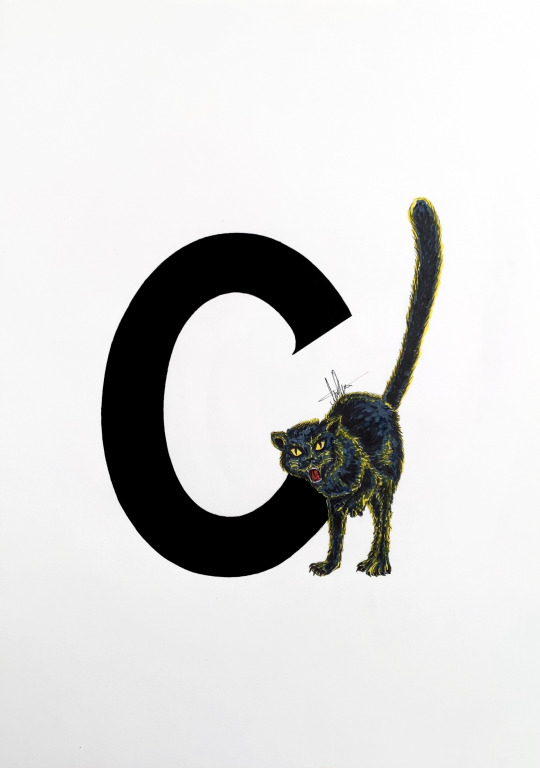





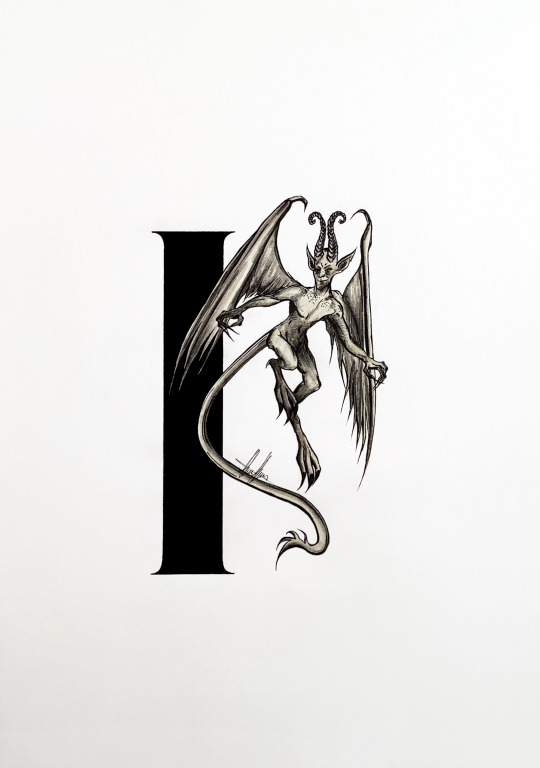

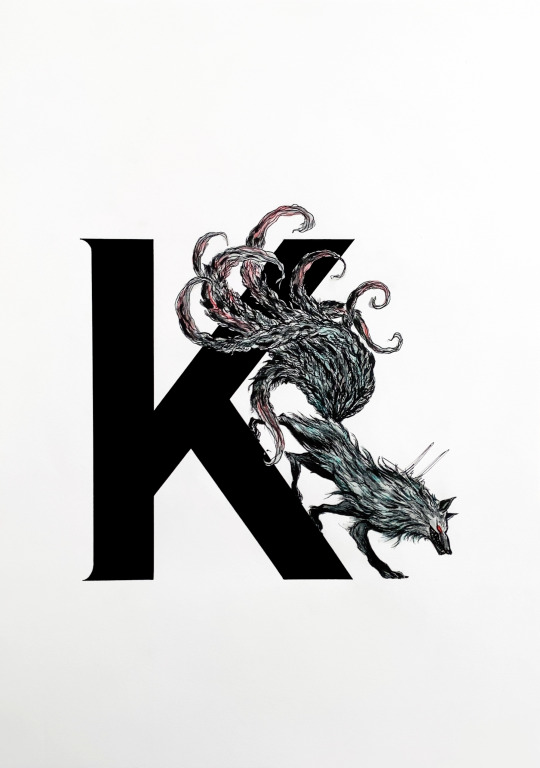
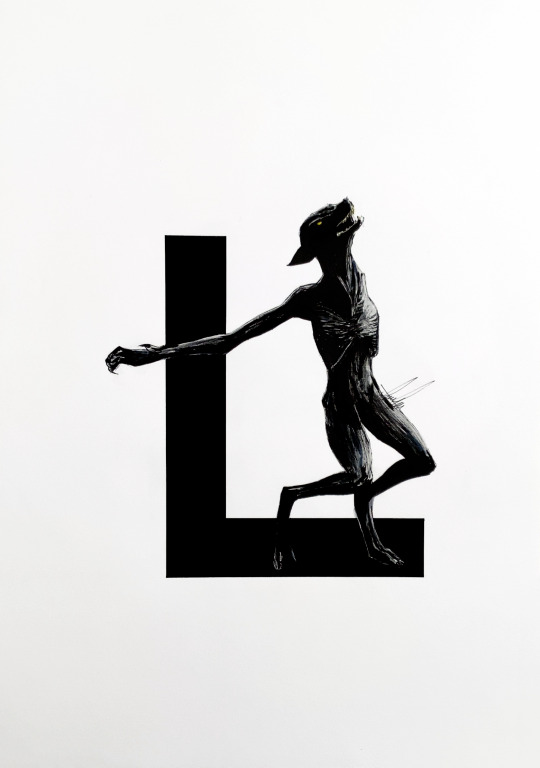
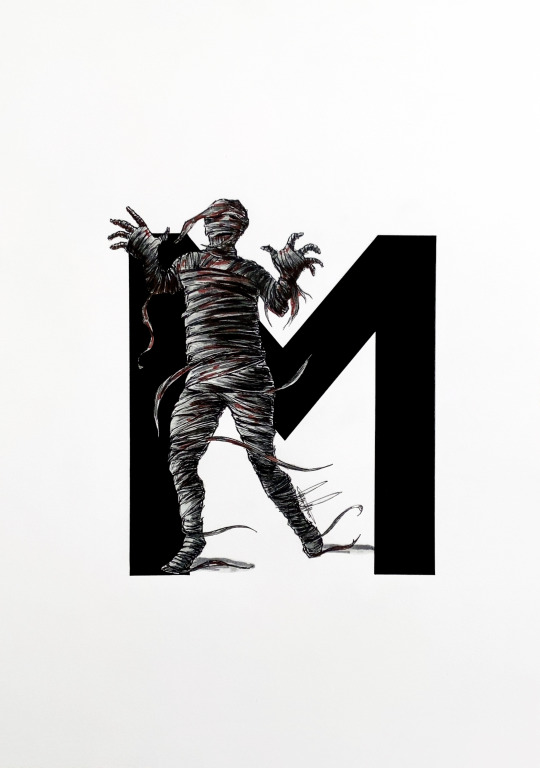






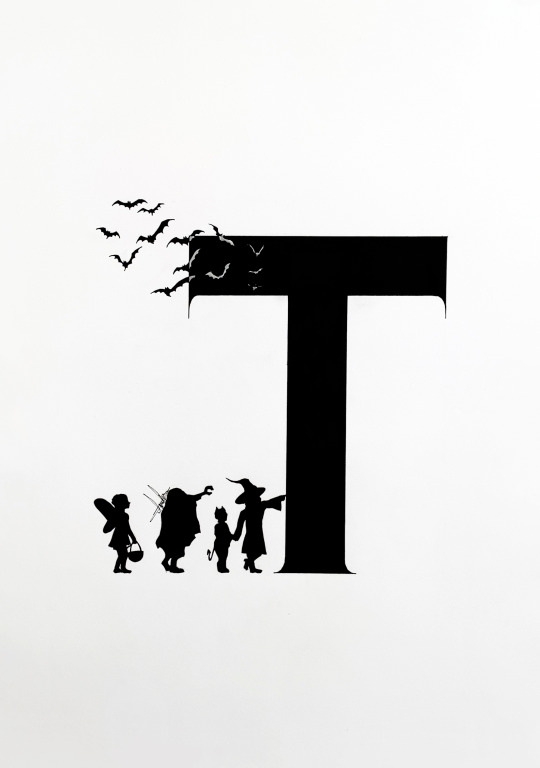

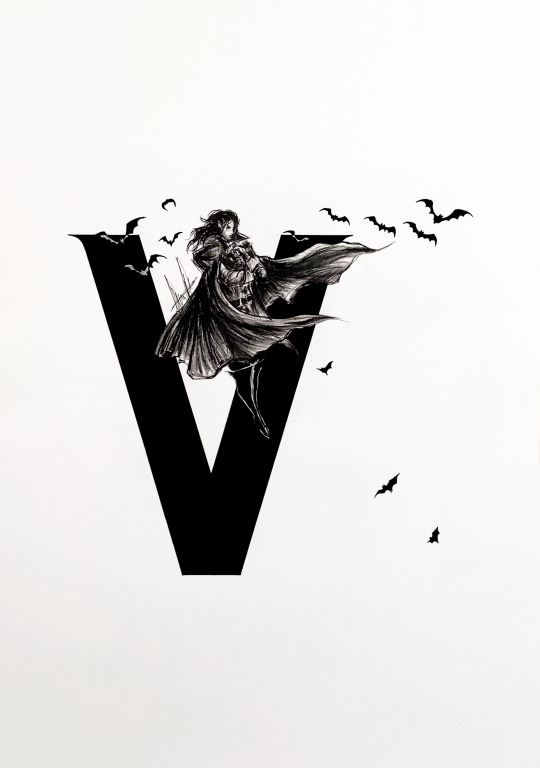
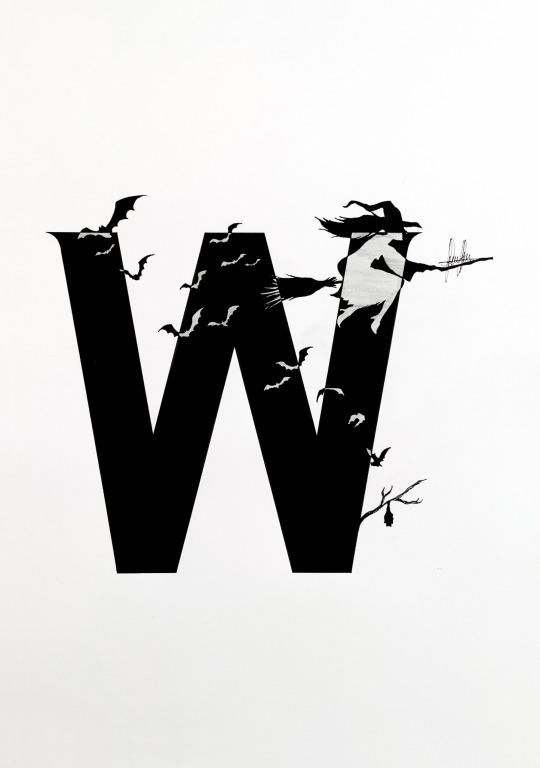

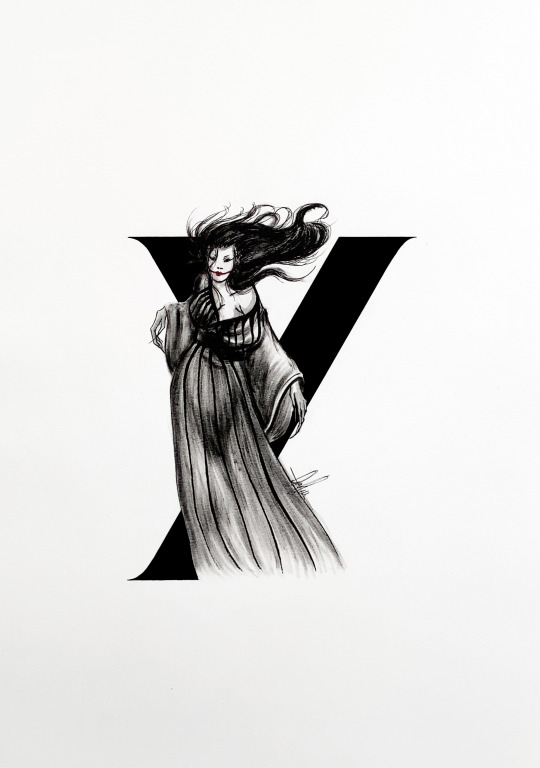
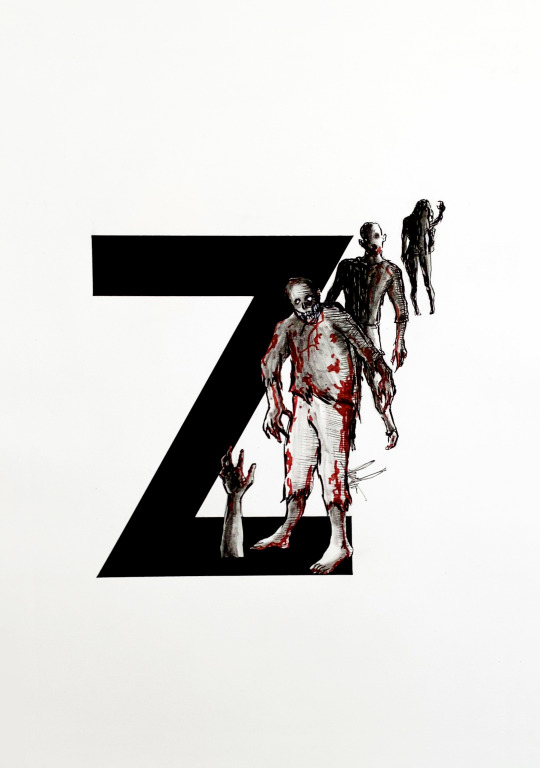
Hey guys! Do you remember them?
Well, many things of Inktober '23 will be published here! You'll see, guys!
A from Alien.
B from Bats.
C from Cat.
D from Demon.
E from Eyeballs.
F from Frankenstein.
G from Ghost.
H from Halloween.
I from Imp.
J from Jack O'Lantern.
K from Kitsune.
L from Lycanthrope.
M from Mummy.
N from Nightmare (Before Christmas).
O from Owl.
P from Pumpkins.
Q from Queen.
R from Rokurokubi.
S from Skull.
T from Trick or Treat.
U from Unicorn.
V from Vampire.
W from Witch.
X from Xenomorph.
Y from Yuki Onna.
Z from Zombies.
#art#artist#artistic#traditional art#inktober 2022#inktober 2023#inktober art#inktober#inkdrawing#illustrated capital letter#ink illustrated capital letter#illustration#collection#alphabet#illustrated alphabet#graphic design#letters#halloween#happy halloweeeeeeen
39 notes
·
View notes
Text
The Ink Demonth 2022 - Day 7 Dependency Inversion
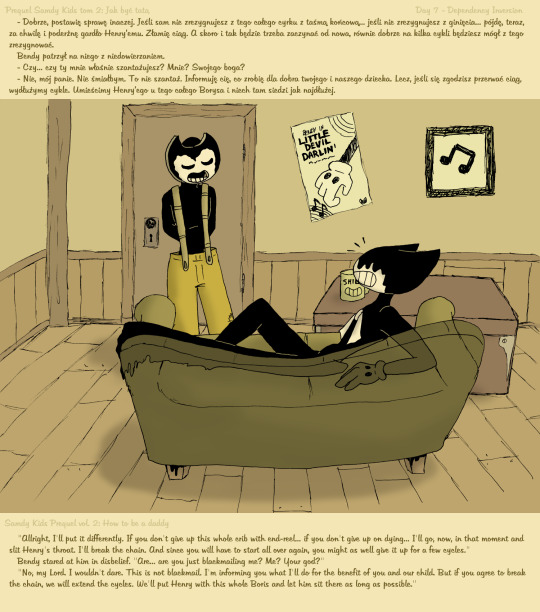
Sammy: "I'm not blackmailing my Lord, I just tell him what I'll do if he doesn't do what I tell him."
This is literally the definition of blackmail, Sammy X"D
From the translation curiosities: my proofreader didn't have any comments on my translation here. Fuck yeah.
And also another interesting fact: in Polish I do not like spelling the word "pan" (that means in English lord/master/mister) with a capital letter. On the other hand, in English - the writing Lord with a small first letter looks incorrect. Therefore, in the Polish version, Sammy says "mój panie" to Bendy, and in English, he says "my Lord". I decided that I will not standardize it in any way.
I don't know what went into my head to make transparent through the couch, I guess I originally assumed the back of the couch would cover all of Bendy, but it didn't. Nevertheless, I decided to leave it in this form - so that the glove could be seen.
By the way, yes, you can see right - Bendy has a pregnancy belly here. The quote is from a chapter where Sammy and Bendy already know they are expecting a baby (they don't know yet that there will be three babies). In this chapter, Sammy generally tries to find out what to do with newborn and toddler and how to be a good dad. But in this chapter too, he decides to take steps to stop Bendy from dying, as seen in the illustrated quote.
So here you have the first quote and the illustration from outside of the regular Samdy Kids. It's easy to know which illustrations are from the prequels - Bendy has a glove there, his untied bow tie on his chest and a crippled leg. Bendy in the proper series of Samdy Kids transform into his perfect form (let's say it is - for Sammy for sure).
Link to rules of the Ink Demonth.
#The Ink Demonth#Bendy and the Ink Machine#BATIM#Samdy Kids#Sammy#Bendy#Ink Bendy#Ink Demon#pregnancy#poster
12 notes
·
View notes
Text
1/26 Reading + Reflection - Project 1
Chapter 2 - The Anatomy of Typography
This was a good refresher for the historical context and differences between typefaces. I see myself going back to reference it often in the future. I think the typefaces I’d like to reference for my music festival branding would be classified as Modern, Humanist, and Geometric. Modern typefaces have an “…extreme contrast between thick and thin strokes” (38), which would translate well to handlettering. I will experiment with brush and ink to achieve that look. It is not something I’ve done before but I like the textural quality of brushstrokes. Another idea is to actually carve out a block of rubber and go through the process of printmaking because that also has a unique textural quality to it, but I am not currently taking a printmaking course/unsure if I could use the press (I do have experience with the process from high school). Either way, It would contrast nicely with the simpler, more even stroke Geometric typefaces I have in mind for detailing the festival details. Humanist typefaces are very similar to Geometric, but with a slight calligraphy quality and some diagonal stress (39). They both have high legibility, which is important for crucial details like the date and location.
Page 60 has examples of how type could be distorted by manipulation with digital tools, to capture visual ideas. I am drawn to this but a caveat is legibility. The proposed solutions are to carefully space the letters and choose an appropriate typeface.


I took my traditional logo sketches and with Professor Valdes’ advice, narrowed them down to three choices (left). My festival’s name is “So It Goes” and it is based on indie/alternative female artists. When I started out, I gave myself the constraint of circles and ovals to ‘carve’ the letterforms out of. We talked about how #15 could possibly be manipulated into its own shape outside of the oval. I made several more variations for that but none of them really clicked, so I ventured into illustrator to digitally alter some fonts I already downloaded (right). I took apart the capital G and frankensteined it into a lowercase g since the font ‘Despina’ is composed of all capitals. I do like how it looks but it is not exactly what I’m looking for yet.
My tasks this weekend is to research the merchandise and album covers of the artists I want to feature to narrow down a certain aesthetic I want to capture. I might have to create a couple new moodboards. They are contemporary artists and the identity of alternative, independent music lends itself to a wide variety of motifs and themes, so I need to find the common thread. I know that in the poster and branding, I want that contrast of flowy handlettering with the simple Geometric type.
For imagery, I was thinking of cutting the logo out of a thick sheet of paper, holding a prism up to it, and capturing the light that filters through to the wall. But that requires me having decided on a logo.
I have my work cut out for me.
0 notes
Text
This week long project was a really good introduction to third year VisCom. It was an intensive experience but I ensured that I experienced thoroughly with my ideas. I loved the idea of using a tail in a typographic sense and I managed to include mediums that I’m not that familiar with, like animation.
While my animations were basic in nature, I love the outcomes, they are simple but fun, and perfectly illustrate the ‘tail’ like nature of a Q. I also really enjoyed using ink on top of printed media to showcase different variations of the letter. I was then able to use these to make graphic versions of a capital 'R'.
One of my aims this year, as I'm sure is the same for many students, is to create things to improve the quality of my portfolio. I know where I want to be with my practice upon finishing my degree and so I have created specific aims to ensure I get there, one of which is to really improve my layout skills, as this is something give really struggled with over the course of my degree. Ive never been a fan of grids, and I want to try and change that by creating work that is clean and has a well considered system supporting it.
The type posters are again simple, but I wanted to really strip back and focus on layout and type and I'm really happy with the result of them. It's reassured me that I'm capable of using grids and I can continue to improve my skills in this area throughout the year.
On reflection of this project, I think it's been a great warm up to get us started for the competition briefs. While I wish I had given more time to my research and gaining more visual inspirations, I'm glad I focused on experimentation as this is a skill that I think really drives my work.
0 notes
Text
Difference between Hand Lettering and Calligraphy

Writing and illustrating words is a type of art. Creating words on paper with neat and clean designs, stroke is a well-crafted and patient art. There are many such art forms which promote writing into THE ART Here is a list of the most famous:
Hand Lettering
Calligraphy
Typography
They are all beautiful art of writings in their own way. It has been noticed that people are often confused between them, especially between hand lettering and calligraphy - due to a few similarities.
What is Hand Lettering?
Hand lettering is an art of illustrating letters to give them a dramatic effect by shaping and drawing them in various characters and patterns. The best part about this is that there are no particular rules to be followed, except for that they should be readable.
This art of illustrating letters was developed a hundred of years ago, majorly in the early 1800 with the rise of industrialization worldwide. Gradually, it became very popular and was vastly used in signage advertising. and lettering was thought to be a dying art in the late 1900s to early 2000s due to digitalization. But on the contrary, thanks the digital age, hand lettering has now become a famous art, spurring it into various commercial fields of art forms.
To practice hand lettering these the tools would come in handy-
Pencil - You can sketch and erase your ideas easily off the paper unlike with the pen.
Roller scale - Roller scale is a great tool when you've to draw grids. It is otherwise also a very tricky tool to use and if not managed can spoil the art.
Miscellaneous - The other things required are water colours, acrylic colours, brushes, palette, etc.
What is Calligraphy?
Calligraphy is the art of writing beautifully in the tweaking pattern while writing the words. Calligraphy is an ancient and globally popular art form. It has been in continuance since 600. B.C., where it was originally invented in Rome. Since then, with the rise of modern calligraphy, calligraphy has undergone many major changes.
As mentioned before, calligraphy is an art of writing and does not speak just one language. It is adaptable in various languages, which has given birth to doing calligraphy in many languages as below-
Chinese Calligraphy
Indian Calligraphy
Western Calligraphy
Arabic Calligraphy
Calligraphy is immensely popular and requires practice and concentration to master the art. Calligraphy unlike hand lettering, has set of rules to follow for each pattern. It can be freely used in any shape too.
The tools required for Calligraphy are
Dip pens They are the traditional calligraphy tools and are used for scripts such as copperplate, etc.
Brush pens They are also used for calligraphy and they are usually cheaper and a more approachable tool for beginners. Brush lettering can be done with brush pens.
Flat nib pens They are used for calligraphy scripts such as gothic calligraphy, italics, uncials, roman capitals, and many more.
Fountain pens They are more suited for penmanship as (most of them) don't have a flexible nib by default which is necessary for creating thick and thin lines like with the dip pens.
The conclusion is that it is important for artists to understand the work that goes in two different art forms.
Penkraft conducts classes, course, online courses, live courses, workshops, teachers' training & online teachers' training in Handwriting Improvement, Calligraphy, Abacus Maths, Vedic Maths, Phonics and various Craft & Artforms - Madhubani, Mandala, Warli, Gond, Lippan Art, Kalighat, Kalamkari, Pichwai, Cheriyal, Kerala Mural, Pattachitra, Tanjore Painting, One Stroke Painting, Decoupage, Image Transfer, Resin Art, Fluid Art, Alcohol Ink Art, Pop Art, Knife Painting, Scandinavian Art, Water Colors, Coffee Painting, Pencil Shading, Resin Art Advanced etc. at pan-India locations. With our mission to inspire, educate, empower & uplift people through our endeavours, we have trained & operationally supported (and continue to support) 1500+ home-makers to become Penkraft Certified Teachers? in various disciplines.
1 note
·
View note
Photo
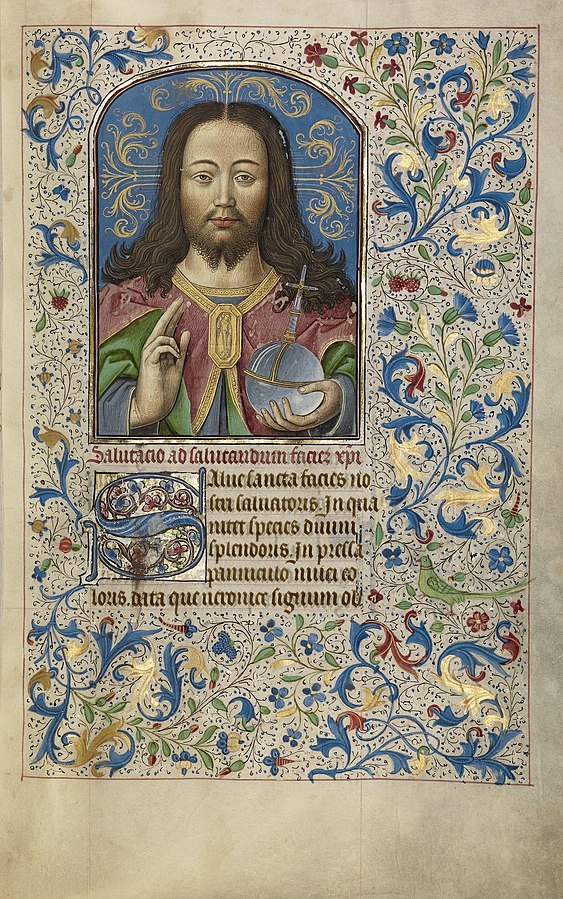
Willem Vrelant - Salvator Mundi - 1460
Arenberg Hours the Savior of the World; Workshop of Willem Vrelant (Flemish, died 1481, active 1454 - 1481); Bruges, Belgium; early 1460s; Tempera colors, gold leaf, and ink on parchment; Leaf: 25.6 x 17.3 cm (10 1/16 x 6 13/16 in.); Ms. Ludwig IX 8, fol. 32
Willem Vrelant (died c. 1481/1482) was a Dutch book illuminator.
The book of hours is a Christian devotional book popular in the Middle Ages. It is the most common type of surviving medieval illuminated manuscript. Like every manuscript, each manuscript book of hours is unique in one way or another, but most contain a similar collection of texts, prayers and psalms, often with appropriate decorations, for Christian devotion. Illumination or decoration is minimal in many examples, often restricted to decorated capital letters at the start of psalms and other prayers, but books made for wealthy patrons may be extremely lavish, with full-page miniatures. These illustrations would combine picturesque scenes of country life with sacred images. Books of hours were usually written in Latin (the Latin name for them is horae), although there are many entirely or partially written in vernacular European languages, especially Dutch. The English term primer is usually now reserved for those books written in English. Tens of thousands of books of hours have survived to the present day, in libraries and private collections throughout the world.
The typical book of hours is an abbreviated form of the breviary which contained the Divine Office recited in monasteries. It was developed for lay people who wished to incorporate elements of monasticism into their devotional life. Reciting the hours typically centered upon the reading of a number of psalms and other prayers.
A typical book of hours contains the Calendar of Church feasts, extracts from the Four Gospels, the Mass readings for major feasts, the Little Office of the Blessed Virgin Mary, the fifteen Psalms of Degrees, the seven Penitential Psalms, a Litany of Saints, an Office for the Dead and the Hours of the Cross. Most 15th-century books of hours have these basic contents. The Marian prayers Obsecro te ("I beseech thee") and O Intemerata ("O undefiled one") were frequently added, as were devotions for use at Mass, and meditations on the Passion of Christ, among other optional texts.
135 notes
·
View notes
Text
He Wished a Lot of Things
A trans Snape/Snupin one-shot (which you can also find here on my AO3 and here on my Wattpad!)
On a side note, why do we only do trans Snape stuff for a single week? Let’s make this bitch year-round.
Word count: 2804
-------------
He saw them first in his second year as the boy stepped out of the showers, a towel wrapped around his waist and his chest entirely exposed. Beneath the long black hair, whose water-dripping tendrils had been strategically placed over his chest, Remus Lupin could have sworn he had just laid his eyes upon two long, red scars.
The image kept him awake at times. He never asked; he knew Severus Snape was touchy to talk to in the first place, and scars — which he knew from personal experience — were even touchier. So he kept himself quiet, feeling different about the boy from then on, wondering about the newfound mystery of him every time their eyes met from across a classroom. But the question remained, and so did the scars.
‘How did you get them?’ he scrawled eventually on a piece of parchment after weeks of grappling with the thought, passing the letter casually across the long table in the Charms room and slipping it under his thin fingers. It took what felt like years to get a simple reply; one in such elegant cursive that his own handwriting looked like aimless ink above it.
‘Get what?’
Such a fruitless answer. But Remus wasn’t expecting much else. He tagged along almost every day as his friends taunted the boy; of course his responses would be slow and guarded.
‘The scars,’ he wrote back, and then, because he knew that Severus was more often injured by others than by accidents, he revised his question. ‘Who did it to you?’
He watched in anticipation as Snape contemplated the words, scribbling something below them but not giving the square of parchment back. The wait was endless. The class was the longest Remus had ever attended.
But he was answered when they left the classroom as the hour marked the end of the lecture, Severus catching him by the door and shoving the piece of paper back into his grip.
“Biology did this to me, Remus,” he said plainly. “Now get out of my way.”
Snape pushed past Lupin, his green-accented robes flowing behind as he hurried down the hall. Remus watched in puzzlement, slowly unfolding the parchment and wondering what the boy’s answer was even supposed to mean. Biology gave him scars? He couldn’t have been born with them; they looked far too fresh.
Looking down at the parchment, Remus gave a small laugh. Severus had taken the past thirty minutes to draw a werewolf in the bottom lefthand corner, tongue lolled out, heart-eyed as it reached up at the moon. The moon, which Remus noted with another charmed giggle, wore a subtle frown in its center.
He didn’t ask about the scars again for years.
—
He saw them again in the courtyard, but really only because he was looking for them. They had faded a lot since Year Two, and he wouldn’t have noticed had he not previously known.
James Potter had picked another brawl with him, and, in embarrassment after realising that he was losing, had hexed the boy’s shirt off. His hair, shoulder-length now, wasn’t long enough to conceal the traces that were left, and Remus found himself staring. Studying. Almost forgetting where he was. He tried to piece together the puzzle of the two faint red lines across Snape’s ribs, following them from left to right, over and over, looped like a scratched record.
And this didn’t go unnoticed. Severus Snape, trying his best not to squirm under the humiliating attention, stared back.
Remus looked away.
—
“Why do you have scars?”
He had found him in the library, sitting in the farthest aisle from the entry, completely empty aside from the two of them and the slight traces of a mild mouse problem.
Severus narrowed his eyes, slipping a ribbon in to mark his current progress in his book and turning around to face Lupin with a look of blank scorn.
“Since when did the lore behind my physical attributes become your affair?” he hissed. “It isn’t difficult to avoid inquiry about a potentially sensitive subject.”
“Mm,” Remus replied, less morally driven than his usual as he remained phlegmatic against the very fair point. “Luckily, the nerves on one’s chest are often not very sensitive at all, causing related issues to not hurt much in the least aside from inward intrusion.”
“Insightful,” Severus replied snarkily, closing his book and tucking it under his arm. “Charming that my skin is so important to you. If I didn’t know better, I’d suspect you were interested.”
He stood up, and Remus, although towering over him in terms of height, felt suddenly very small.
“But I am interested,” he choked out, clearly missing the meaning behind the term. Snape closed his eyes and sighed with a deep and tired sense of resignation.
“My scars were put there by none other than myself,” he replied. “Don’t be concerned by this; I’m not actively suicidal and the process was beneficial, if anything. Incredibly safe.”
And he left. Remus said nothing. Somehow, although given more information, the situation became even more cryptic, and he understood less and less as he went.
But that was what Snape was. To him, anyway, the boy was an enigma first and an interest second. There was nothing else to it, and nothing else to him. Ambiguity and nothing else. Ambiguity and scars.
—
Remus saw Severus again at the Yule Ball, not like he was difficult to spot, being the only person there in all black, a sleek tunic covering his scarred frame.
“You really went for a new look, didn’t you?” he found himself asking snidely, smirking at the lack of change in his clothing. “That shade of black is just a touch lighter than usual. That’s a big step for you.”
“That shade of unwelcome involvement still hasn’t left your repertoire, however,” Severus was quick to reply. “I’ve been here for three minutes and you’ve shown up already. I should have stayed back and studied like I wanted to.”
A reply left Lupin’s lips before he could filter it out. It was disjointed, random, almost desperate, hitting them both head-on and leaving Severus more shocked than he’d ever inherently been.
“Dance with me.”
There was a silence, the soft motion of a punch glass being set down on tablecloth, and a shocked verbal receipt.
“What?”
Remus knew he couldn’t back out of his own words. He was too timid; too stubborn to admit to anything as a fault.
Giving a slight bow, he held out his hand as the music picked up. An offering, for once, that wasn’t ill-intended.
Tentatively, like a lamb accepting slaughter, the boy’s hand slipped into his.
—
“Potter can’t know.”
Snape whispered it through feverish kisses, leaning back against a pillar in the corridor as Remus lost sight of his own reserve, grasping at his shoulders, his hair, anything he could possibly bring closer to himself.
“James,” he corrected, pulling them both around the corner in the hall as he noticed the faint sound of a stray student’s footsteps, “won’t suspect a thing.”
—
“Good riddance to this bloody school,” Remus heard Sirius scoff as they packed their suitcases for the last time, all carrying diplomas and wearing flashy hats. Remus always found the hats silly, but he saw now why people were so fond of them when they left.
“Is James already back home? I know Peter left last night and I haven’t seen either of them since,” Lupin said, opening the dorm dresser drawers and forcing the last of his sweaters inside his case.
“Yeah. I think they took the last available train together yesterday,” Black replied. “Shame. We could have all left together like the years before. Like old times. This is the last time we’ll be leaving as students, you know.”
A small crunch came from under one of Lupin’s sweaters as he nodded in response. “Yeah,” he said. “Shame indeed. I’ll miss these memories. This school. It’s become my home, you know. And these last few hours…”
Pulling out a crumpled piece of parchment from under his sweater, Remus paused as he saw a faded pair of handwriting styles and a silly illustration of a werewolf. His heart jumping in his chest, he put the drawing back under the sweater and closed his suitcase, picking it up and preparing to leave.
“…this is it.”
Sirius took their things to be loaded onto the train. Remus himself spent a good hour wandering the halls, so empty, so familiar, wishing them all a sincere goodbye. He scanned the small groups of people that were still left, hoping somewhere in the back of his head that the artist of the drawing under his shirt would still be in the building somewhere.
He wanted to speak to him. To ask him about what he would be doing in the war. To offer his address; to offer connection. But he didn’t find the boy anywhere, nor did he find a trace of him. No vandalised books, no cursive notes, and nobody in a sleek black tunic.
He was told by Horace Slughorn to check the library. He thanked him, but insincerely; he’d already looked there, and it was empty.
—
If he knew where Snape resided, he would have shown up. Written, at least. But all he had was the drawing. That was all he had for years. For a long time, he wasn’t even sure the man still existed.
November of 1981 left him connectionless and alone. He felt himself slipping into nothing, the sand of eternity slowly rising over his head until he couldn’t breathe. Every day was a nightmare.
He relied on the Prophet for his entertainment, for his distraction. Anything to make him forget, even for a moment. Anything at all.
And then something did make him forget that he was alone. An announcement that one couldn’t look past. That he couldn’t, anyway.
It wasn’t a major headline, but it was on the bottom left of the front page, announced in capital bold letters with a small, grainy picture too blurry to decipher.
HOGWARTS POTIONS PROFESSOR HORACE SLUGHORN REPLACED IN POSITION BY SEVERUS SNAPE
Immediately, without even thinking, Remus threw the paper on the floor, stood up, and grabbed his coat.
—
“I’d like to see Professor Snape.”
He was directed down to the dungeons, which he approached slowly, stopping for minutes on end to stare at the architecture he’d almost forgotten; the arcs and pillars that he grew up between. He didn’t need a map of this place. His feet knew the way down the spiral staircase. His very skeleton understood the path necessary for the destination of Slughorn’s old office.
He knocked on the door three times. It opened just before he could knock a fourth.
They were both still for a long time.
The response was quiet.
“Lupin.”
Remus wasn’t sure whether to stay or leave. He felt uncomfortable to be once again under the confusing gaze of Severus Snape.
“I saw your name in the Prophet,” he said plainly. “I’m… sorry to intrude. If you want me to go, I—”
“How very timidly-mannered to leave upon an inkling of silence,” Snape said, attempting to sound scornful, but his tone was weak; almost relieved. As he stepped aside to let Lupin into the room, Remus understood with a sudden sort of mental blow that Snape had just recently lost all of his connections, too.
He walked softly inside, taking one step to the left as Severus closed the door behind him. And then, jokingly:
“Potter can’t know.”
Sadly, they laughed.
—
Lupin didn’t even ask to see him anymore. He just walked right in.
Snape provided him with an extra key, one he used often for their weekly rendezvous, once leaving a toothbrush there on accident and never bothering to take it home again. Little by little, the visits became normal, essential, even. They became fueled by connection, by touch, by everything they had lost since graduation.
Little by little, they’d see more of one another. Day by day, Snape would unbutton his sleeves just a little more, finally comfortable enough to show the grotesque mark on his wrist, and Lupin would wear his shirts a little looser, exposing the scars on his neck as they led up to the ones on his jaw and nose. Closeness was their comfort, and they’d revel in it like Shakespearean kings, like Duncan of Scotland, doomed as he was, surrounded by the small joys of his imperfect world and his tarnished reign. Though their environment was muddled by blades of wilted and bloodied grass, the small fireflies within, the light that, although rare, warmed the hands and entranced the eyes like none other, were what they noticed the most.
They one day found themselves undoing the clasps of one another’s shirts, their kisses slow and even, their breaths soft. Lupin’s hands found themselves running across the bare skin of Snape’s chest, smooth, oddly hairless, comfortingly warm. His fingers found themselves on his ribcage. They lived there. And then they stopped.
Although they were almost completely invisible, his hands had found the scars. Scars that, over time, he had forgotten about.
Running his fingers over the rough lines, he looked down at them, and then back up at Severus, who had a sudden expression of what seemed almost like terror.
Remus gave them another examination. He noticed their placement, their edges, how each one stretched in a long like under his pectorals, as if something had been above them that was removed.
And then he understood.
His breath catching in his throat, Remus realised that there was so much about this man he didn’t know. There were struggles that he and his friends had only added to. Parts of him and his life that he never got to see.
He understood then why Snape was built the way he was, why his waist was thin around the center and wider around the hips, why his neck was sleek and his collarbones strong, why his skin was smooth and had a significant lack of hair. He understood why he never saw him shaving and never noticed forgotten stubble on the curves of his jaw. He understood why he would hide his chest with his long hair after a shower; why he said that biology was what gave him these marks in the first place. He understood why he hid himself with tight, concealing clothes and why he would shy away from the connected questions.
All at once, Remus understood the scars.
Quietly, softly, he placed a hand on Snape’s back, pulling him as close as he possibly could. He watched the scared, vulnerable eyes below him and, in an instant, wished he could undo everything he and his friends had ever done to him. He wished he could have supported him; kept himself from prying. He wished a lot of things.
“They don’t define you, you know,” he said eventually, his thumb tracing Snape’s bottom lip as he stroked his hair. “It took me years to understand that about myself, but it’s true. It’s true for me, and it’s true for you.”
Severus looked like the most fragile thing on Earth.
“Do you find them distasteful?” he whispered out, leaning his face into Remus’ bare shoulders, self-directed venom behind his every syllable. “Do they drive you away, knowing about them? About why they’re here?”
“Hey,” Lupin replied, soft as he hugged him close and leaned his chin on the top of his head. “Don’t worry.”
He held him as if it was the last time he ever would. He didn’t let go. He wouldn’t let himself. Fighting back a newfound wave of emotion, he closed his eyes and wished he could articulate how little this knowledge would change anything. How Severus was just as beautiful to him as he had always been. How he didn’t care about the body he used to have or what he used to be, because, to Remus, he was still Severus Snape. He was always Severus Snape, and he always had been, and he always would be, no matter what.
Always.
Still, words were never his strong suit. Emotions never left his lips in prose. So what he said was barely as elegant, not even close to what he wanted to communicate.
But what he said communicated it well enough, because, once he spoke them, they both turned into a crumbling mess of tears and sniffles, holding one another as tightly as they both could manage. His heart thudding in his chest, his breath hitched with a feeling he couldn’t describe, he chose a very decent thing to say. A thing that left them in a very peaceful silence for a very long time.
It was a whisper. And it was safe.
“I have scars, too.”
#pro snape#snape#hp#snape community#severus snape#harry potter#remus lupin#professor lupin#snupin#lupin#fanfiction#fanfic#trans snape week#trans Snape#shiterature#gay#marauders era one shot#1981#my writing#ok look#i am not trans myself#so please tell me if i should edit anything out#or if im being disrespectful in any way#i dont want or intend to be hurtful to the community#im just playing around#so please lmk#youre all so valid btw#fuck jkr#you deserve the world and i love you
47 notes
·
View notes
Text
𝗳𝗶𝗻𝗮𝗹 𝘁𝘂𝗿𝗻 - 𝗯𝗹𝘂𝗲 𝗺𝗲𝗺𝗼𝗿𝗶𝗲𝘀.
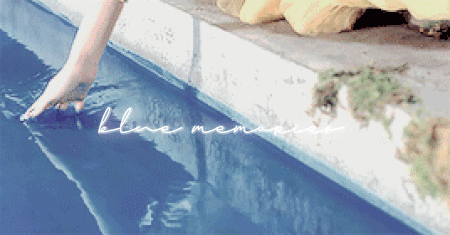
there was a twinge of pain erupting from her lower back as she awoke.
falling asleep on your desk is hardly the wise option, although one glance at the sea of papers she laid in, and you might even understand it. and if you knew the drive of seren armsend, it is that the girl with the sunny hair never gave up until all of her fuel was burnt out.
for six cold hours, she slept with her head rested against her arms, which were now growing so numb she felt that the blood had frozen and failed to rush through. her first waking breaths were startled, the panic that settles when you awake in a strange location, outside of the comforts of your bed and your blankets.
her head rose, tired eyes seeing smudged words in black ink and her fingers coated ebony and red from the energy she put into writing these letters last night. in the end, she couldn’t finish them, and everything hurt. she would do a useless job if she were to try again.
in her wake, her orange hair fell from the grips of a pin and fell down her back, tickling her skin which had grown cold over the night. her teeth shattered, breath trembled, and so she quickly moved to find a sense of warmth. it took a moment to notice the sun pouring through the windows, hiding behind dark curtains which seren threw open with all her might.
her heart was palpitating, like it does when a special day has arrived, one which you’ve been awaiting for quite a long time. her thoughts moving slow, barely awake, seren didn’t realize what it was until she went over to her desk once more and saw something which was not there before.
a card, and a wooden butterfly.
a knock came from the door, and after a few seconds of silence, it opened. her father stepped in, the respected headmaster who also held a gift box in his hands. his smile, rarely seen, was instantaneous when he spotted his daughter looking so curiously at him.
“ hardly how i expected to see the birthday girl today. ”
he carried himself over, limping with his cane in hand, and stood in front of his daughter. over the years, she had grown slightly taller than him. and especially after what she saw and fronted given her adventure, he felt as if she was fifty feet tall. he could see it in her posture, her eyes. yet sweet seren remained sweet, sugar-sweet.
“ sorry, i just woke up ”, seren mumbled through a sleepy hazy, gathering her thoughts to realize she was turning nineteen today. nineteen years on this earth and it felt like she had mentally aged five years since she returned from beyond the walls. “ did you get anything from mom? ”.
“ actually, this is from her. ”
the woman who has been absent from seren’s life for many years often still had time to send her a gift but it didn’t come with every birthday. it was no wonder seren thought her father was kidding as he handed her the wrapped gift and told her to go get dressed.
as he moved towards the door, seren’s curiosity peaked. “ she said she would be in india this month. or at least, that’s what i was told from . . . the letter. ” notes from mrs. armsend were rare, and seren kept an entire collection within an old shoe box she keeps under her bed. the february letter was her most recent one, a clear white envelope stacked with others in yellow and brown.
“ i’m not sure. still, she had time to send you a gift. oh, mine is on the kitchen table. hurry up and get dressed or you’ll be late! ”.
“ l-late for what? ”.
the response never came, seren was left in her room, clutching the wrapped present, turning it in her hands and shaking it to hear a rattle, for clues of what it could be. it didn’t dawn on her that she could open it, it was her birthday after all.
she went to her bed, sitting on the edge and with a wavering sigh, ripped the present open. usually she would take her time, it would drive her father mad, but given how difficult it is to wrap presents, she didn’t want to make a mess.
what was revealed from the box was a gift seren wasn’t quite expecting. usually her mother would sent trinkets, small things to remind the girl that her mother was always thinking of her. last year it was a pair of tap-dancing shoes, seren’s old tap dancing shoes from when she was a kid.
this year, it was a sweater. and it smelled nice.
‘ it’s washed, don’t worry. thought it would fit you, ’ read her mother’s note.
knitted with beige wool and smelling like her mother’s flower garden. seren felt as if it was the first proper gift she had gotten in a long time and that is not to insult her mother’s tastes. it was the first gift that one could say meant a lot to a girl who hasn’t seen her mother in over seven years.
she held the sweater to her chest, almost as if to grasp and hold the woman she misses dearly. she missed her by an inch when she was beyond the walls, they were a week apart from meeting, but salem’s downfall called and seren couldn’t stay for too long.
seren’s eyes, blue and curious, moved to the desk where she had first seen the clues related to her birthday. the wooden butterfly, carved carefully as if the artist molded it with the hands of a god. and she knew alexander rather well, he was not one to do something half-assed.
a blue monarch, painted blue and thin to the point where you might not even recognize it to be a mere illustration of the animal. jewels glued into the wings, glinting under sunlight and bringing a smile to seren’s lips. she was yet to open up the letter, figuring she would collect them through the day and open them when she’s tucked back into bed.
it was only through looking at that butterfly that seren realized what she was late for.
and like a burst in the wind, she threw on casual clothes along with her mother’s sweater, braiding her hair quickly on her way down the stairs and apologised quickly to the maids for getting in their way. “ dad, you could’ve woken me up sooner! or like, had martha come wake me up with a bucket of cold water! ”, she whined.
“ sorry, love! but i was quite distracted myself. don’t forget your gift! ”.
as the headmaster, he had a lot of things to do and seren tried to star clear from his path. she quickly swung back and took the gift box, it wasn’t that big but it didn’t matter, but it was heavy, it left her confused at first, to the point where she turned to her father to ask him what was inside. but one glance at the time and she made haste out of the room.
the walls of valhalla weren’t bleak this time around. a tuesday morning in the midst of mid-term vacation, she wasn’t expecting to see any students. most would’ve taken the train down to the capital and spent time with their family. some may have even paid a fortune to be flown out beyond the walls, which, believe it or not, were actually being deconstructed.
seren squealed slightly as she slid, just barely missing the turn to head up the stairs to the cafeteria. she hated being late, tying it in with being disorganized and messy and she liked to think of herself as anything but that. she couldn’t be late for a birthday celebration, especially knowing who would be there.
she burst through the cafeteria louder than she was expecting, gaining some attentions of students who looked over their shoulders and shook their heads with distaste yet the girl carried on walking. until her table was visible in the corner, just by the exit, near to the tall glass windows.
a pair of excited eyes stared back at her. perseus’s eyes. met with romeo’s excited cheer as he stood up and ran towards her for a hug, which she fully accepted. only, the impact was a little worse than she was expecting.
“ happy birthday, girlie! look at that braid-- do you need help finishing it? ”.
seren chuckled softly, pulling back from the warm hug, “ i’ll do it, don’t worry. and thank you. hardly feels like i’m turning old today. ”
“ have you cried yet? ”, perseus asked, gaining a minor head tilt from the redhead. “ no? oh, just me, then. i don’t know, i normally get emotional when it’s my birthday. it’s either due to pure sadness or gratitude. ”
evangelos grunted beside him, dressed rather gloomily for such a pleasant spring day. “ from now on, it’ll be of gratitude. no use being sad when we have an entire world out there to explore ”, he pointed out, bringing his arm under the table and then putting something on top for seren to see, a gift box. “ gifts out, gentlemen. ”
seren sat in between alexander and romeo. alexander was rather quiet today, more quiet than usual. she didn’t hear a peep from him until she nudged him slightly and smiled at his curious, innocent eyes. “ happy birthday, freckles. i hope my gift is being taken care of ”, he uttered.
and seren thought back to the blue butterfly and beamed gently. it was in her room, on her desk, perched in between her pencil case and her portraits. three portraits; of herself and her sister, of herself and her mother, and of herself and these gaggle of idiots.
“ you bet it is. ”
the table, previously barren and rid of any rubbish, found itself covered in a sea of colored wrapping papers, so many colors it made seren’s eyes hurt but not as much as the gifts which were brought forward, some so beautiful that choking back the tears was proven harder than facing salem.
and as the commemorations went on around her, the birthday girl merely observed her treasures in silence.
seren gazed lovingly at the glass rose, watching the flow of stunning lights filtering through it like fairies dancing from within, and if she was not careful, she could fall into a hypnotic trance. it reminded her so faintly of her snow globe from her early childhood, a fragment of a memory revived in a glass rose given to her by someone she never took for a romantic, even if his name would suggest otherwise.
navy eyes fell onto the gift beside it, perseus’s creation. a caricature, a rather comic one, too. seren pinched her lips together and smiled sadly. although the image of her sister never ceased in her mind, nothing beat seeing her in a physical sense, even if it was the size of a figurine. yet what mattered was the love that was invoked out of her, overflowing. her sister’s magical hair and eyes, chasing a butterfly in a field.
to avoid crying, seren then stared at a gift of an absent member. or at least he said he would meet them at the town square later. levi’s love of the hunt and liking to the crafts of man led to the gift seren wasn’t expecting, but loved regardless. concealed in a glass case, a frozen dagger, quite literally wrapped in layers of ice and fog that gave it an almost clear appearance. an ancient craft, a rare, cultural gift. seren smiled, though, wondering what might’ve caused levi’s love of knives so much.
in her arms, she held kailen’s present, wondering where the boy was at the same time. an album, composed of pictures they’d gathered over the months, from the adventure all the way to now, to just yesterday, where they had some fun at the beach. she would open the album and gloss often the dozen pages. so many memories, many which she kept close to her heart. kailen’s paternal instincts breezed with this gift, leaving seren feeling safe.
and the final gift, a bow. a simple, wooden box around the size of her small hands but it contained the most stunning gift of all; music. evan had sharp ears, knowing a song which would bring seren peace, and threw it into a music box, and when she opened, revealed engravings onto the wood of the lid, and as she spun the wheel and let the song play, she would think of those blue memories from their adventures, up until now.
seren felt delicate fingers through her hair, sensing a bow being tied to her braid by kailen’s hands. “ we hope you like it. took a while to choose each gift but the result was good, by the looks of things ”, was he referring to how seren was struggling to keep the tears at bay?
she sniffled, chuckling sweetly. “ they’re perfect. it’s just . . . the first time i’ve felt happy on my birthday. and it’s thanks to you idiots ”.
“ we’re not idiots! we just care a lot about you ”, perseus squeaked, reaching over and flicking her chin playfully. “ cheer up, pinkie. you still have to deal with us idiots till the end of the day. it’ll be magical, we promise. ”
with that, seren smiled. they didn’t even realize it, that every moment with them was magical. and that she was happy so long as she had them.
she owed the blue memories to these silly boys. these silly, but special boys.
6 notes
·
View notes
Photo
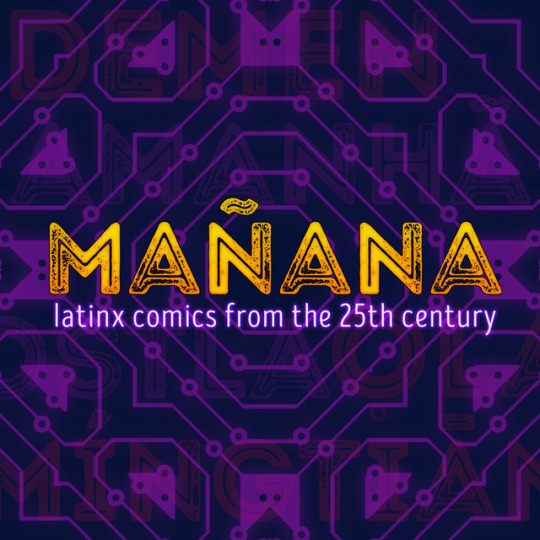
MAÑANA: Latinx Comics From the 25th Century is now open for submissions.
[Noten: Toda esta información también está disponible en español a pedido.]
"In 1492, Christopher Columbus sailed to the islands of the Caribbean. That single event led to the radical transformation of the region, the hemisphere, and eventually the entire world.
Indigenous peoples were decimated. Lands were colonized. African peoples were displaced and enslaved. Race, as a concept, took root. Black women and indigenous women were subjugated. Cultures died, fused, changed, and were, sometimes, reborn. Art, music, foods, and faiths echoed these tangled pasts. Immigrants from across the planet flocked to the newly christened "Latin America." A caste system based on race and color reigned. Liberation struggles were fought. Revolutions were won. Wars of independence were waged. Coups were orchestrated. Global capitalism ran amok, fueling the mass exodus... And we survived it all.
That all seems so far away now."
MAÑANA: Latinx Comics From the 25th Century is a speculative fiction comics anthology set throughout Latin America in the 2490s, roughly one thousand years from the voyage that changed the world. It took 500 years to get us where we are now -- where could 500 more take us?
Submission Period
Submissions will be open to the public from May 27th - July 7th, 2019 (11:59 PM Pacific Time).
Who Can Participate
To pitch a story to MAÑANA, you must be Latinx or Latin American. We define Latinx as "a person living outside of Latin America whose cultural background includes any of the Spanish, Portuguese, or French-colonized countries of the Americas and the Caribbean." We define Latin American as anyone born, raised, and currently living in any of those same countries.
You may pitch as a SOLO CREATOR (making the whole comic by yourself), as a WRITER ONLY (story writer who we will pair with an artist), or as an ARTIST ONLY (a comics artist who we will pair with a script).
Solo Creators with a strong story idea but not-as-strong artwork may receive an offer to be paired with a different artist (vice versa for pitches with stronger art than story).
"Writers Only" may request to be paired with a specific artist. The artist they request must be someone they know for a fact is filling out the "Artist Only" submission form. The reverse applies to "Artists Only" requesting a specific writer.
Age Restrictions
All contributors must be 18 years of age or older. All content must be suitable for readers as young as 14 years old.
Specifications
Comics from 2 - 12 pages long (must be an even number)
6.625” x 10.25” trim size (template will be provided)
Bleed? Yes.
Black & White, or Grayscale (no screen tones)
600 dpi
.PSD final files
Timeline
Selection Process (May 2019 - Aug 2019)
Open Submissions: 5.27 - 7.07 (6 weeks)
Selection Period: 7.08 - 7.28 (3 weeks)
Acceptance Emails & Feedback: 7.29 - 8.08 (1 week)
Paperwork: 8.09 - 8.15 (1 week)
Creation Period (Apr 2019 - Sep 2019)
Script: 8.16 - 9.15 (4 weeks)
Feedback/Edits: 9.16 - 9.29 (2 weeks)
Thumbnails: 9.30 - 10.20 (3 weeks)
Feedback/Edits: 10.21 - 11.03 (2 weeks)
Pencils: 11.04 - 12.15 (6 weeks)
Feedback/Edits: 12.16 - 12.29 (2 weeks)
Inks: 12.30 - 1.26 (4 weeks)
Feedback/Edits: 1.27 - 2.09 (2 weeks)
Toning & Shading: 2.10 - 3.01 (3 weeks)
Feedback/Edits: 3.10 - 3.15 (2 weeks)
Lettering: 3.16 - 4.05 (3 weeks)
Feedback/Edits: 4.06 - 4.19 (2 weeks)
Final Files Due: May 3rd, 2020
Kickstarter (May 2020)
Payment (June 2020)
Compensation
Contributors will be compensated at a rate of $107/page plus any Kickstarter bonuses unlocked through stretch goals. Contributors also receive a minimum of 10 complimentary copies of the anthology, royalties on all digital sales proportionate to their page-count contribution, and royalties on any future print runs of the anthology after the first printing sells out.
"Writers Only" will receive $42/page, with bonuses, comp copies, and royalties split evenly between themselves and their artist.
"Artists Only" will receive $65/page, with bonuses, comp copies, and royalties split evenly between themselves and their writer.
All contributors have the right to purchase additional copies of the anthology at 50% off the cover price for as long as the anthology is in print.
Rights
Creators will cede exclusive first worldwide print and digital rights to their stories for a full calendar year from the date of publication, and non-exclusive worldwide print and digital rights (in both the English and Spanish languages) in perpetuity. Ownership remains with the creators.
What We WANT:
Comics (not illustrations, not prose, not poetry).
Previously unpublished stories.
The protagonist (or POV character) must be Latinx or Latin American.
Writers who have a connection to the country they choose as their setting (either from there, born there, parents or grandparents born there, lived there for many years, etc.)
Speculative fiction: How has technology changed? How has society changed? How have politics changed? The natural world? Fashion? The thoughtfulness of your world building will make or break your pitch.
Informed fiction: We want stories whose ideas about the future are rooted in an understanding of the past and present. For example: we're less interested in whether flying cars exist and more interested in whether the Amazon rain forest makes a full recovery (and what that means for Brazil).
Optimism: your vision of 25th century Latin America doesn't need to be utopic (although it can be) as long as themes of improvement, empowerment, growth, or problem-solving predominate.
Peaceful stories, sad stories, triumphant stories, funny stories, failure stories, action stories, philosophical stories, love stories -- the full spectrum of humanity is welcome. The catch: it must end “positively.” Everything doesn’t have to work out, but we prefer stories end on a note of hope, new understandings, resilience, etc.
What We DON’T Want:
No fan works. No auto-bio. No prose. No one-off illustrations.
Comics that are already finished or that you’ve already started drawing.
Hacking the Mainframe: Unless you really, really think you can "WOW!" us with a highly original take, avoid "hackers take down the mega corporation" as a plot (because it's been done to death).
Fantasy: We want science fiction and/or speculative fiction based in the real physical laws of our universe. However, certain elements of magic realism can work for us (e.g. in an otherwise realistic setting, a character speaks to a long departed ancestor, experiences old gods in a vision, or watches their life unfold out of sequence).
Ahistorical Takes: any stories that erase, deny, or revise the real-world histories of Latin American peoples will be rejected.
Horror: Your story can use fear and danger as plot elements, but if instilling fear/existential dread in the reader is the overarching goal, this is the wrong anthology.
Cursing is permitted as long as words aren’t used literally (i.e. “Shit, you scared me!” as opposed to “Let’s go shit in the woods!”) and are used very sparingly when used at all. In general, we’d prefer not.
No porn. No references to specific sexual acts. No explicit nudity whether sexual or non-sexual (sorry, folks). “Consensual fade-to-black sex between legal adults” is fine.
No depictions of abuse (sexual, physical, psychological) whether pictorial or written. Characters may vaguely reference (in non-graphic language) abuse that they have suffered in the past if doing so serves the story or is integral to the character.
No gore. People can get hurt, bleed, die, etc, but not in a grossly over-the-top way that fetishizes violence.
No slurs, no racist statements nor imagery, no misogyny, no transphobia, no ableism, no xenophobia, and no white supremacist nonsense in general. Since this anthology is about Latin America's future, these topics can be broached in your story, but we urge you to tackle such subjects in a more creative way than "[insert drawing of some guy yelling a slur]."
Ready to pitch?
"SOLO CREATORS" APPLY HERE.
"WRITERS ONLY" APPLY HERE.
"ARTISTS ONLY" APPLY HERE.
Here’s what you’ll need to complete each form:
SOLO CREATORS:
A working title and page count for your comic (doesn’t have to be exact).
A synopsis of your story, including a beginning, middle, and end. Spoil everything, but try to keep it under 300 words.
Preliminary sketches associated with your pitch: character ideas, environment concepts (the latter is especially important if your portfolio lacks strong examples of background art), etc. These don’t need to be final or polished pieces! Just clear enough to give us an idea.
Links to any relevant publishing credits. Self-published works and webcomics count as credits! Choose examples that best reflect the style you intend to use for this comic. You may simply include a link to your portfolio if you have no pre-existing credits, but please note that folks with sequential storytelling examples will receive preference.
Tell us about yourself, your cultural and creative background, and why you want to be in MAÑANA. Short and sweet is best!
WRITERS ONLY:
A working title and page count for your comic (doesn’t have to be exact).
A synopsis of your story, including a beginning, middle, and end. Spoil everything, but try to keep it under 300 words.
Links to any relevant publishing credits. Self-published works and webcomics count as credits! You may simply include a link to your writing portfolio if you have no pre-existing comics writing credits, but note that folks with comics writing experience will receive preference.
Tell us about yourself, your cultural and creative background, and why you want to be in MAÑANA. Short and sweet is best!
ARTISTS ONLY:
Links to your portfolio and/or any relevant publishing credits. Self-published works and webcomics count as credits! You may simply include a link to your portfolio if you have no pre-existing credits, but please note that folks with sequential storytelling examples will receive preference.
Tell us about yourself, your cultural and artistic background, and why you want to be in MAÑANA. Short and sweet is best!
More Questions?
Check out the FAQ. If your answer isn’t there, Ask away!
457 notes
·
View notes
Text






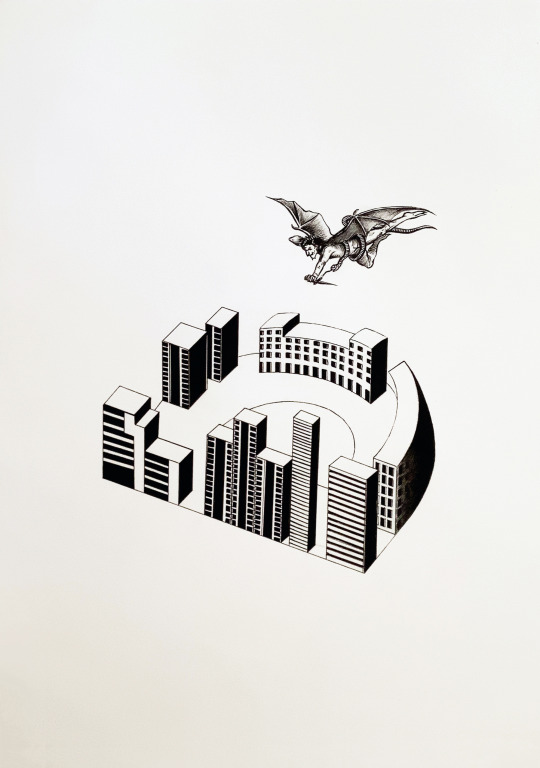
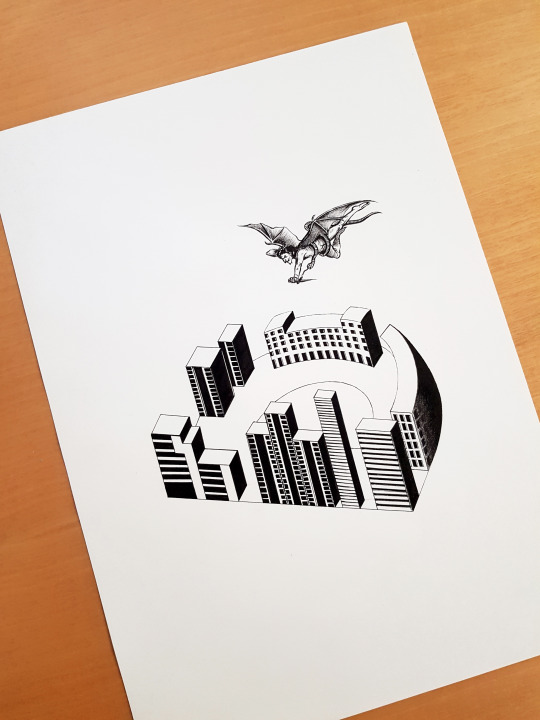

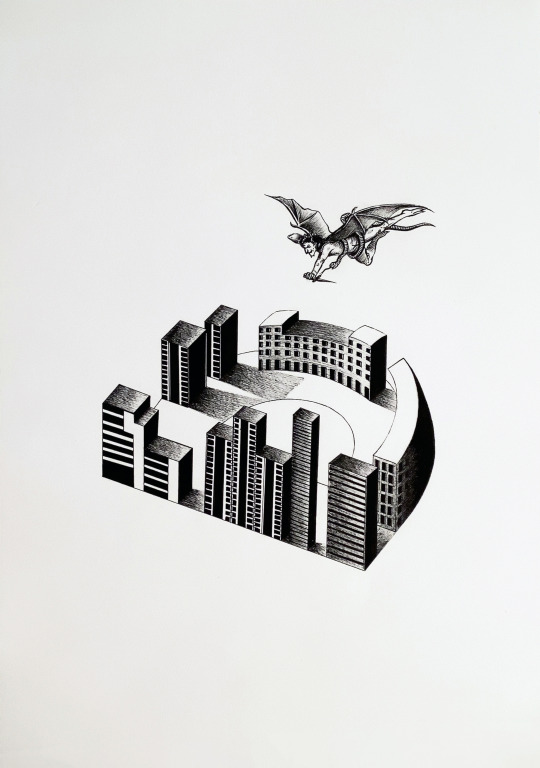
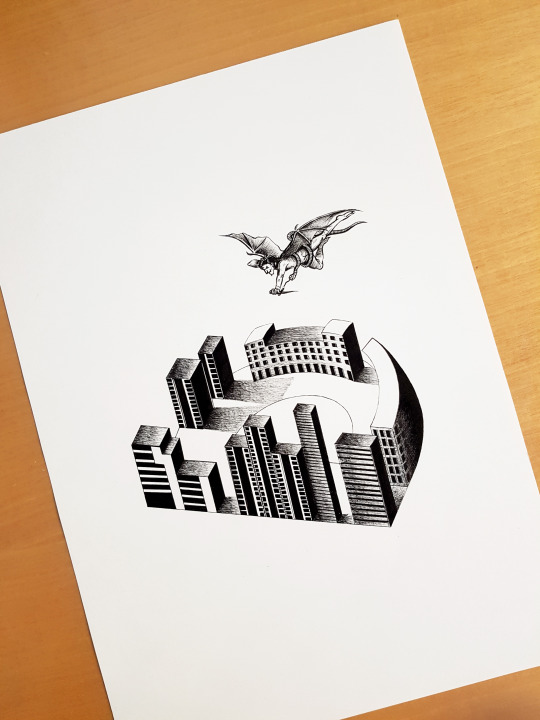




Illustrated Capital Letter for Inktober '23
"D" from Devil/Demon
👹👹👹👹👹👹👹👹👹👹
#art#artist#artistic#traditional art#inktober 2023#inktober art#inktober challenge#inktober#inkdrawing#illustrated capital letter#ink illustrated capital letter#ink art#illustration#illustrated concepts#artwork#collection#alphabet#illustrated alphabet#graphic design#letter#letters#letter d#devil#sympathy for the devil#demon#halloween#happy halloweeeeeeen
5 notes
·
View notes
Photo

✦ NEW LIFE - REAL LIFE ✦ Freehand Khallisattva Letters para cubrir cicatrices de Fer, renovamos la pierna amigo!! Muchas gracias por tu confianza y aprecio a mi propuesta. 🔥🧨🙏⚡️🖤 . . #CALLISATTVA #KHALLISATTVA LETTERS #Rodmaztattt Hecho en @24.tattoo ✨🎨 . . . . . . . . . . . . #tattoo #blackwork #ink #tatuaje #illustration #tattooart #blxckink #Inkpediaorg #Tattoodo #Blackttt II #tattoos #lettering #mastersoflettering #calligraphy #calligraffiti #Argentina #BuenosAires #BsAs #freehand #FreehandTattoo #originaltattoo #Khallisattvas #tattooargentina #kneetattoo #cover #coveruptattoo (at Almagro - Capital Federal) https://www.instagram.com/p/CG_F9dKgvnQ/?igshid=13qa8vycsl5ft
#callisattva#khallisattva#rodmaztattt#tattoo#blackwork#ink#tatuaje#illustration#tattooart#blxckink#inkpediaorg#tattoodo#blackttt#tattoos#lettering#mastersoflettering#calligraphy#calligraffiti#argentina#buenosaires#bsas#freehand#freehandtattoo#originaltattoo#khallisattvas#tattooargentina#kneetattoo#cover#coveruptattoo
1 note
·
View note
Video
youtube
American Flagg! is an American comic book series created by writer-artist Howard Chaykin, published by First Comics from 1983 to 1989. A science fiction series and political satire, it was set in the U.S., particularly Chicago, Illinois, in the early 2030s. Writers besides Chaykin included Steven Grant, J.M. DeMatteis, Alan Moore and John Francis Moore.
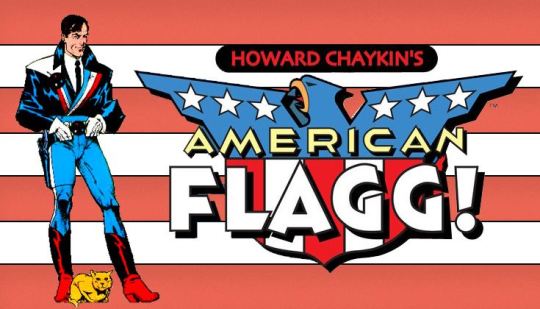
American Flagg, which ran 50 issues (October 1983 – March 1988), was one of the first titles to be published by First Comics, an early alternative press comics company founded in Evanston, Illinoisin 1983. Unusually for the time, the company offered its freelance writers and artists creator rights, including ownership of their creations. Regardless, writer-artist Howard Chaykin, then living in New York City, felt trepidation when First Comics approached him to do a project. He recalled in 2010,

My concern had all and everything to do with the fact that this was a brand new company, located in [a suburb of] Chicago. I'd always worked for companies I'd visited and had day-to-day-dealings with. [But] they talked about a financial plan that would make it possible for me to get out from under the debt I had accrued working for [publisher] Byron Preiss [illustrating early graphic novels]. It was encouraging, so I went home and concocted a scenario, a pitch document, and that was it.

Chaykin devised a series set in 2031, a high-tech but spiritually empty, consumerist world in which the American government has relocated to Mars, leaving what remains of the U.S. to be governed by the all-encompassing corporation known as the Plex. The series star is Reuben Flagg, a former TV star drafted into the Plexus Rangers and posted as a deputy in Chicago, Illinois.

The first 12 issues, running through cover-date September 1984, consisted of four interlocking, three-issue story arcs. Chaykin recalled his difficulty in producing 28 pages of art and script monthly. "I was still a smoker and a drinker at the time. And [the output was such that] I'd never done anything like that before, and it was insane. It just devoured my life [and] I had no assistants. I didn't know how to work with an assistant at that point, and it was a very difficult process. ... I was trying to do a fairly high-quality product and I didn't want to slough it off."

Chaykin made wide use of Craftint Duoshade illustration boards for American Flagg!, which in the period before computers, enabled him to add shaded textures to the finished art.Ken Bruzenak's lettering and logowork also won notice, as it was integral to American Flagg's futuristic, trademark-littered ambiance.

American Flagg's first dozen issues form one complete story that has influenced comic creators including Brian Michael Bendis and Warren Ellis. The comic made a huge splash at the 1984 Eagle Awards, the United Kingdom's pre-eminent comics awards. Chaykin and American Flagg! were nominated for ten awards, eventually winning seven. American Flagg! also won the 1983 Comics Buyer's Guide Fan Award for Favorite Comic Book and tied for the 1983 CBG Award for Favorite Character (Reuben Flagg).
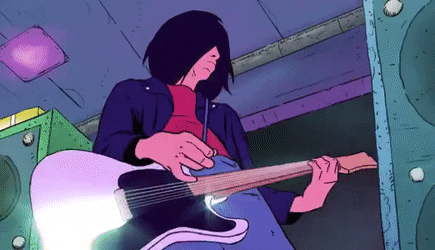
After issue #12, Chaykin continued the series while also working on such other projects as his revamp of The Shadow for DC Comics and the graphic novel Time2, based on characters introduced in a one-off American Flagg! special in 1986. During this time, Alan Moore wrote a back-up story that ran several issues and concluded in an issue-length story.
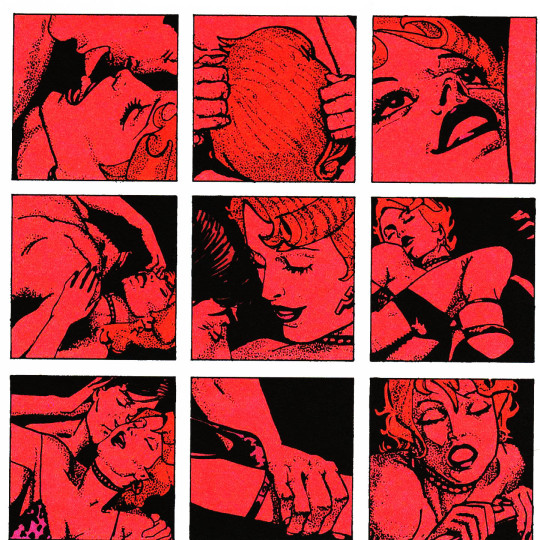
Eventually, Chaykin left, to be replaced on a regular basis by first Steven Grant then J.M. DeMatteis. Grant left after only seven issues due to creative friction with the series's new artist, Mark Badger. According to Grant, he had wanted to continue doing stories in the same style that Chaykin had established, while Badger wanted to take the series in new directions. Chaykin returned for a brief run to wrap up storylines before the first volume ended in March 1988. The title was relaunched a few months later as Howard Chaykin's Amerikan Flagg!. This run saw Chaykin return to write the first issue before handing over to John Francis Moore, with Mike Vosburg and Richard Ory penciling and inking the interior art, but the franchise failed to recapture its early success and was canceled after 12 issues.
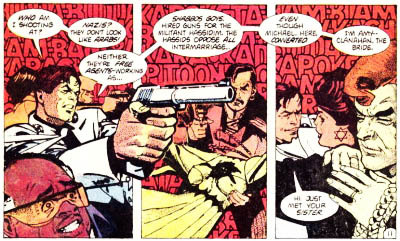
The story takes place in the year 2031, after a series of worldwide crises called the Year of the Domino (1996) has forced the U.S. government and the heads of major corporations to relocate to Hammarskjold Center, on Mars ("temporarily, of course"). In the wake of the American government leaving the planet and the Soviet Union collapsing from Islamic insurrections, there was a power shift throughout the world, with Brazilian Union of the Americas and the Pan-African League becoming the new superpowers on Earth.

However, the exiled American government, its corporate backers, and a group of technicians in the defected Soviet lunar colony of Gagaringrad form the Plex: a giant, interplanetary union of corporate and government concerns that conduct commerce and govern the United States from its capital on Mars. Many population centers are grouped around massive, fortified arcologies called Plexmalls and the law is enforced by the Plexus Rangers, the absentee Plex's Earthside militia.
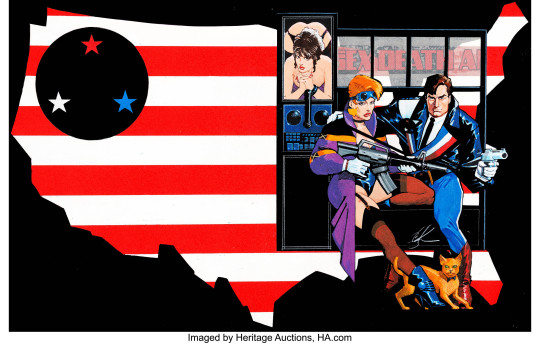
The Plex has formed the Tricentennial Recovery Committee, to get America "back on track for '76", but the TRC is in reality a plan to sell the United States off to the new superpowers and to leech off the remaining inhabitants before gaining true self-sufficiency. As a result, the Plex has outlawed non-combat related education, organized sports such as basketball and personal aircraft, restricted media to only one outlet, the Plex itself (although it has multiple channels), and advocates and glorifies the use of political violence amongst independent policlubs by providing money and firearms for its hit TV show Firefight All Night LIVE!, and covertly sterilizes the population by using a combination contraceptive and antibiotic called Mañanacillin to reduce the population.

This all changes when former television star Reuben Flagg is drafted and transferred to Chicago's Plexmall to replace the local Ranger Hilton "Hammerhead" Krieger's fallen partner. He witnesses widespread graft and corruption throughout the Plexmall, but also a series of subliminal messages implanted in a television show that are causing outbreaks of gang violence. After he uses his emergency powers to interrupt the broadcast, he not only ends the violence, but also brings forth a series of events that causes the Plex to send in covert agents, the death of Hilton, and the unveiling of Q-USA, a secret TV station owned and operated by Krieger that opens Flagg's eyes to the nature of the Plex.
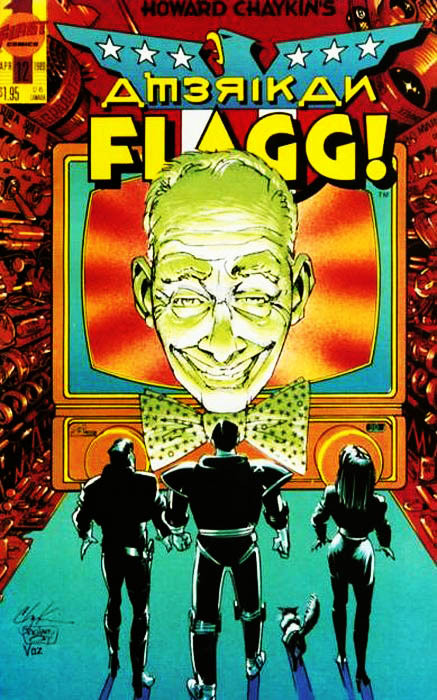
As the series progressed, Chaykin took less and less of a direct role in scripting and plotting the stories out, and by the third year of its run, he really had nothing to do with the book other than cover art. Stories began to violate the rules that Chaykin had explicitly stated in the writer's bible for the series (for instance, California was said to have slid into the Pacific Ocean, but in the final year of the book, California was merely shown to have been abandoned for reasons that were vague at best), and characterizations began to drift considerably as well. (Among other things, Flagg abandoned his interest in 1930s jazz, and was frequently shown listening to late-1960s rock, as well as becoming more of a traditional stern-jawed good-guy hero). After trying and failing several times to shore up declining interests, First Comics decided to lure Chaykin back into the writer's seat. "American Flagg!" wrapped up its principal storyline with issue #50. By this time, Reuben Flagg had traveled to Mars, overthrown the Plex, and become President of the United States. He then decided to separate Illinois from the United States and run it as his own personal fiefdom. All issues of this series took place in the year 2031.

The next year, the comic was re-launched under the name Howard Chaykin's Amerikan Flagg! (The "K" and a reversed "r" were to reflect the fact that most of this series took place in Russia) and picked up from where the earlier book had left off (in 2032). There is some difference of opinion as to whether this new book was intended to be a limited run, or open-ended as is the norm with comics. In either case, it ended after twelve issues. The final issue ends with a photo album of the Flagg's future domestic life, with lots of kids, a screaming shrew of a wife, and a balding, overweight Flagg.

Characters
Reuben Flagg, born in 2000 at Hammarskjold Center, Mars, to Axel and Rebecca Flagg, was a stand-up comic and popular television star of the show Mark Thrust, Sexus Ranger. After he was made superfluous by CGI technology, he joined the Plexus Rangers and emigrated to Earth, being stationed in the Chicago Plexmall. Flagg is Jewish, and his parents' "undesirably bohemian" attitudes have given him an idealistic view of the United States that runs contrary to the Plex. He has a desire to set things right again, and through inheriting Q-USA, begins to set on that path.
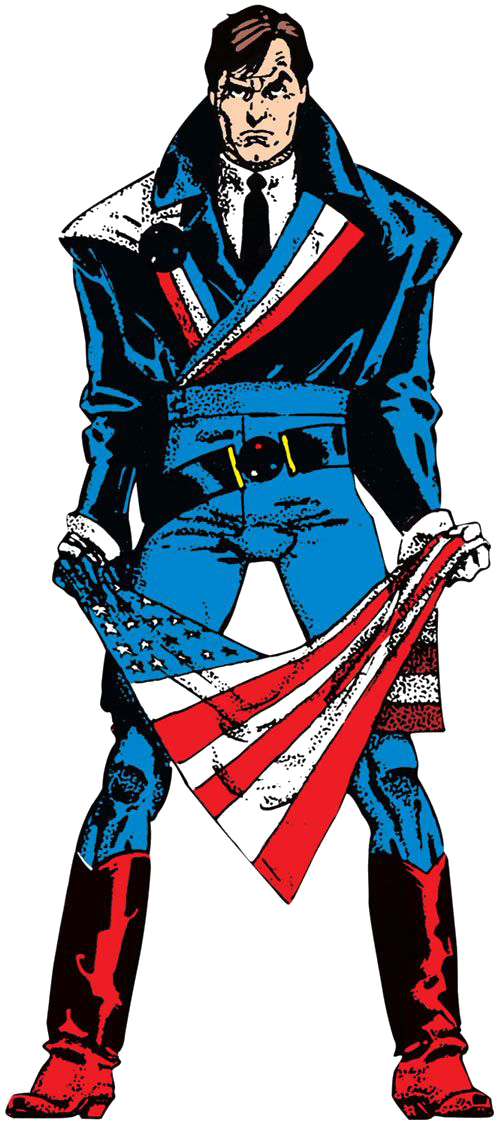
Raul the cat, an intelligent, talking orange tabby housecat. With the exception of his intelligence and his ability to speak (an ability whose origin is never explained), he appears to be otherwise a normal house pet. However, he has a customized set of cybernetic gloves, designed by Mandy Krieger, that give him opposable thumbs.
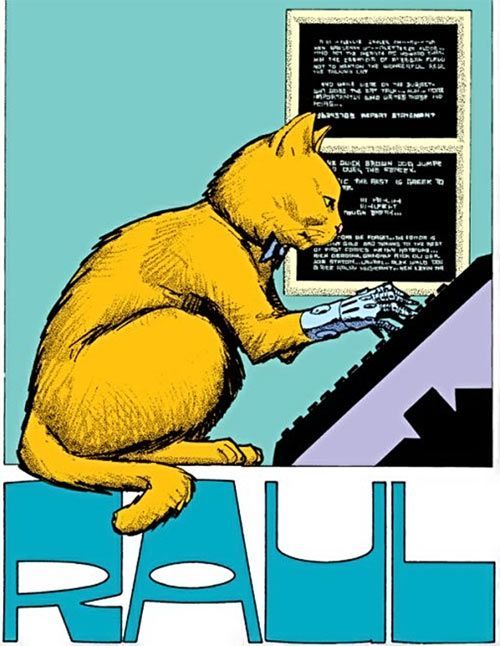
Hilton "Hammerhead" Krieger, was Flagg's superior at the Chicago Plexmall. A co-founder of the Genetic Warlords motorcycle gang along with Charles Blitz, but after his 13th arrest, the Plex drafts him because of his criminal experience. Intending to take advantage of the fledgling organization, he meets his future wife Peggy and stays with the Rangers. He does not trust anyone, not C.K., the mayor, not his wife Peg, not his daughter Mandy, and, while a Plexus Ranger, he especially does not trust the Plex. He runs an underground television station called Q-USA that broadcasts illegal sports, pornography, and pre-collapse movies and television shows. He is killed by a Plex secret agent, and his cat Raul gives Flagg the keys to the station. He also leaves behind a video explaining to his "heir" the truth of the Plex and the rules he wishes his successor to follow.

Amanda "Mandy" Krieger, daughter of Hilton, she is the air traffic controller for O'Hare Chicago Plexport. However, since the O'Hare Plexport only receives two flights a week, Mandy spends her time tinkering with electronics or getting into mischief. She later becomes a deputy to Flagg.
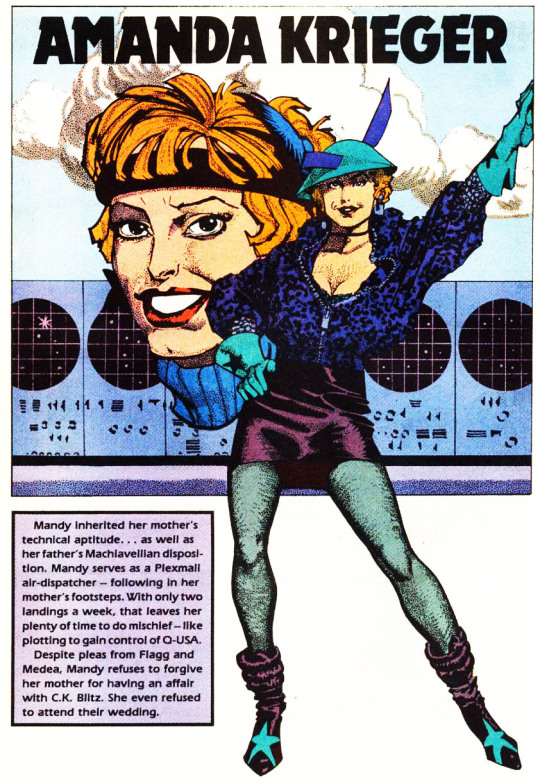
Jules "Deathwish" Folquet, captain of the Skokie Skullcrushers basketball team. Despite his punk appearance, his hulking size and the extreme nature of the sport he plays, Jules is quite intelligent. He is referred to as the "king of the two finger lobotomy." He first teams with Flagg to resolve a hostage crisis, but later forms the Video Rangers auxiliaries, and then becomes a Ranger deputy. He also later hosts a talk show with Raul called the "Him and It Show". In the second series, he renounces his violent ways, and, through a remarkable series of events, becomes Pope.
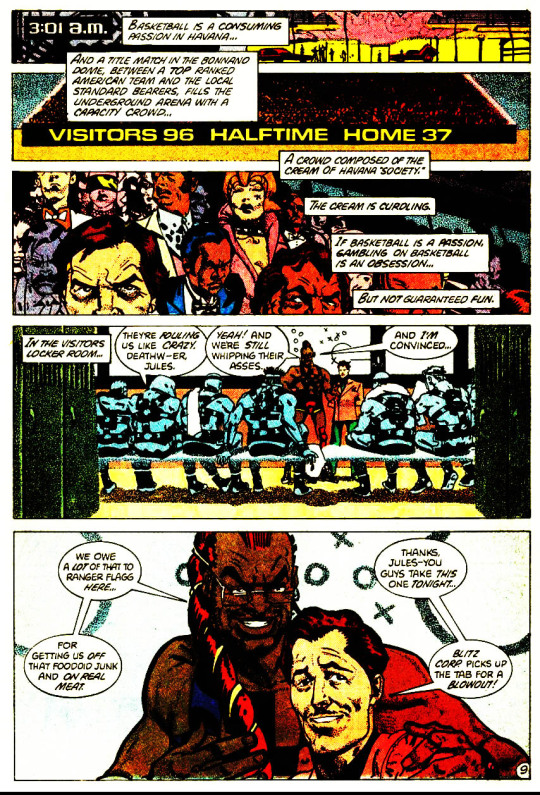
Charles Keenan Blitz, also known as The Honorable C.K. Blitz, a co-founder of the Genetic Warlords along with Hilton Krieger, also ended up getting drafted into the Plexus Rangers, but ended up leaving to become mayor of Chicago. Blitz has his hand in every deal, regardless of how illegal it may be; is extremely wealthy and corrupt; and has killed political opponents. As a side venture, he runs the Skokie Skullcrushers blackmarket basketball team. He is usually flanked by his two robot bodyguards, Bert and Ernie, named after "a private joke no one under 40 understands". He has had affairs with Mandy Krieger and with Peggy Krieger, while Hilton was fighting a brushfire war in Carracas, which lead to her being kicked out by Hilton and giving birth to...
Medea Blitz, the offspring of C.K. and Peggy. Early in the series, Medea is a wild child and hangs out with Cyril Farid-Khan, gang leader of current Genetic Warlords. She has a secret affair with Hilton Krieger, but after his murder, is considered a suspect and is involved in a traffic accident, which causes her to miscarry Krieger's child. In order to clean up her act, C.K. Blitz has her join the Plexus Rangers to straighten her out. As the series progresses, Medea is shown to become more and more accepting of the Rangers and becomes a decent team player in Flagg's group.
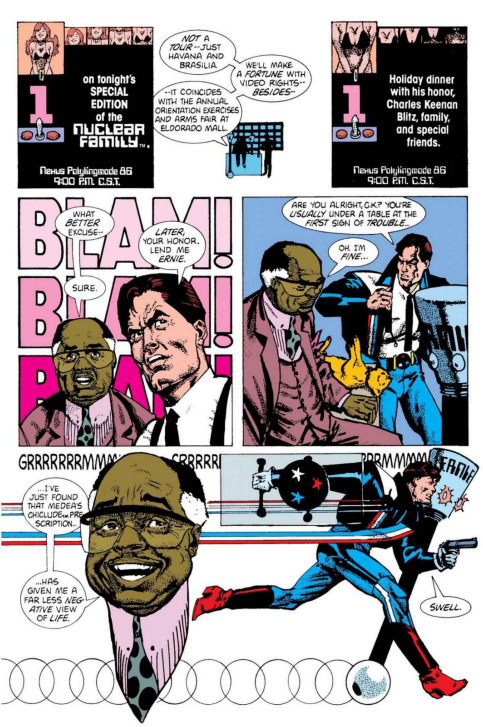
Sam Luis Obispo also known as Ned Beaumont, also known as Tom Slick. A hustler Reuben meets in Havana while escorting the Skokie Skullcrushers, he later partners with Flagg for most of his time in South America. He has an affair with the wealthy daughter of the Brazilian ambassador, which causes all sorts of problems for Flagg and himself.

William Windsor-Jones, but his best friends just call him Bill. Bill is the youngest member of the Witnesses, a gang of octogenarian rebels. He helps Flagg out from time to time, giving him intelligence and technical support. He later has become a newscaster for Q-USA. Bill is Prince William, and the rightful heir to the now-abolished British throne.
Luther Ironheart, a robotic Plexus Ranger with a head that consisted of a holographic projection. Assigned to be Reuben Flagg's partner on patrol. While not very bright, he exhibited superhuman strength and agility.
#american flagg#american flagg!#mark thrust#howard chaykin#dystopia#dystopian#1983#silversteel rocks#first comics#howard chaykin's american flagg#bob violence#mojo el diablo#comic tropes#overlord comics#strange brain parts#reuben flagg
5 notes
·
View notes
Text
Vinyl Lettering Offers Variety In Creating Exceptional Bathroom
What do vinyl banner printing professionals offer businesses in Ontario? As the discover the Canadian capital of Ottawa as well as the most populous city of Toronto, this province hosts over 13,000,000 people. Really of them live your market southern part of the province near those two cities. For businesses in this particular area, attracting customers is consistently a face. Using the services of vinyl banner printers is one way to be noticeable. A custom banner offers your message in achieve this that will attract customers in where you live and at tradeshows. Purchase get these banners as freestanding or with rollup banners and stands.
They should be employed for the two indoor and outdoor apps. Many marketing campaigns that require the utilization of low cost marketing tools can make best use of these details. We can utilize vinyl wall stickers for purpose of outdoor marketing campaigns while there are many varieties that can be utilized for indoor campaigns. You encounter them in many shapes as well as to meet these dynamic needs pratically.
We are proud supply full color Flexible Plastic Banners, a material that can be as pliable as vinyl yet projects the most impressive quality appearance over the market. Once your image is printed directly onto the plastic film, the back is reinforced with a laminate coating to make it in prime condition for the next illustrate to. And transporting end up being as simple as any other vinyl banner, because in addition, it works in banner stands and then rolls up until next spare time.
The location will get a new size of vinyl truck signs online sign that you order. Before you decide on a size, consult your local sign laws. Many cities never allow signs over a certain size or during a certain your height. Some business parks require a specific style or size, so check if any rules pertain to you before ordering.
The school banner should print with UV-resistant, weather-resistant ink. Pigment-based ink provides the best UV-resistance. When you could have your school banner designed into the outdoor for better visibility, you must to like the ink quality.
Describe: Advertise what you are doing. Tell people what you serve, sell, make, do. They will not want to go with you if they do not know what they're shopping due to. Customized vinyl banners are an easy way to tell them what they want.
Installation is quick and vinyl roof tiles are utilized in the largest amount places as you can be like kitchens, bathrooms, bedrooms and entrances. They clean well as a result easy to maintain. The only place they would possibly not be fitted for would be in an utility area for example a garage. A good area prefer this they would be too slippery because inside of their finish and they would not adhere well to the concrete. For finding a garage area a garage floor tile would be much better suited.
When creating a hanging banner, it's important to leave an area of white space over the design which will help the viewer remain focused on the phone message. White space ought to not always be considered "blank", may perhaps possibly be the best way to design element that enhances balance allowing it to help generate a classic or rich visual appeal.
https://trucksignsfast.com/
1 note
·
View note
Text
More Superhero Comics, Revealing My Reactionary and Facile Engagement with Art as Little More Than the Accrual of Social Capital, Benefiting Nobody But Myself, 4/7/19
The League of Extraordinary Gentlemen Vol. 4: The Tempest #5 (of 6), Alan Moore, Kevin O’Neill, Ben Dimagmaliw, Todd Klein: This is an often very funny issue, set up like a pasted-together UK edition of old US pre-Code horror and crime comics, which, in addition to being funny, plumps up the page count as the plot moves maybe two or three tics forward in advance of the very-last-issue-of-LoEG-ever. The conservative in me wonders why we’re being this digressive in the penultimate number of the entire saga, but then -- at least since “The Black Dossier” -- this project has been more about positioning various strands of fiction and their accrued cultural baggage against one another than telling a propulsive adventure story. Anyway: the realm of Faerie, having easily survived an attempted nuclear strike on the collective imagination by a military-corporate black ops fiction squad comprised entirely of various revamps of James Bond, has brought in every character from every game, comic, cartoon, TV show, movie and book reality with everything for a HUGE apocalypse!
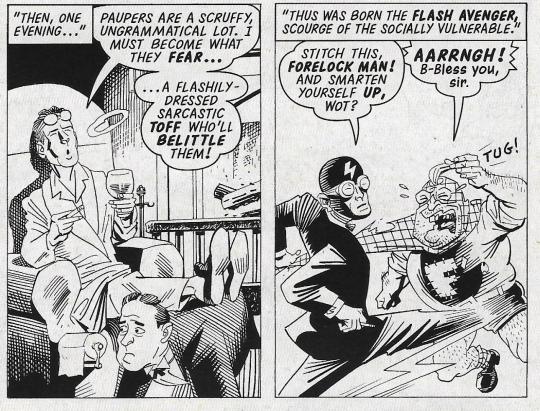
Scenes of bedlam involve: the life story of Victorian painter and murderer Richard Dadd; cameos by Stardust the Super Wizard and David Britton’s Lord Horror; the oeuvre of musician Warren Zevon, brought to terrifying life; a Corbenesque image of a nude muscleman’s massive dick flapping into battle in 3-D; Mick Anglo’s Captain Universe, presented by Moore in unmistakable evocation of his own Marvelman/Miracleman stories of decades ago; a ghost wearing the word CRIME on his head a la Charles Biro’s Mr. Crime, the greatest American comic book horror host; at least one figure from the annals of racist caricature firing powerful sound waves from his mouth; a monster named Demogorgon, the leviathan of Populism, which the heroes allegorically cross as a footbridge en route to a safehouse named the Character Ark; a page-long parody of Batman (via the forgotten UK superhero playboy character the Flash Avenger), describing his origin as motivated entirely by hatred of the poor; a text feature telling of UK comics artist Denis McLoughlin, who worked consistently since the end of WWII, never made enough money to retire, and spent decades as an elderly man drawing for survival on titles he hated, eventually taking his own life in his 80s; and the secret of what happened to all the British superhero characters after the midcentury, which is that they were all eaten by Capitalism, pretty much. I laughed a bunch, but if you think LoEG is tedious shit, this probably won’t turn you around.
*
Savage Dragon #242, Erik Larsen, Ferran Delgado, Nikos Koutsis, Mike Toris: The latest installment of the longest-running Image comic written and drawn by one of the Image founders, now deeply dove into problematic network tv drama stuff. The Dragon’s relationship with his partner Maxine is still strained in the wake of her sexual assault, a video of which the Dragon viewed in the police archives; meanwhile, the mother of one of the Dragon’s young children has been telling them all the truth about their parentage, further disrupting the peace of the household. Also, a formerly aggressive sex robot has joined the gang, dressed as an anime maid. And, the Dragon reluctantly teams up with the mid-’00s-vintage sexy heroine character Ant (which Larsen purchased from creator Mario Gully a few years ago) to foil a scheme by elderly elites to project themselves into the bodies of mythic gods in order to provoke the Rapture. Most interesting to me, however, is a bonus segment in which Larsen presents newly-lettered pages of his preliminary solo work on “Spawn” #266 (Oct. 2016), which would later be filled out by contributions from Todd McFarlane, colorist FCO Plascenscia, and letterer Tom Orzechowski.

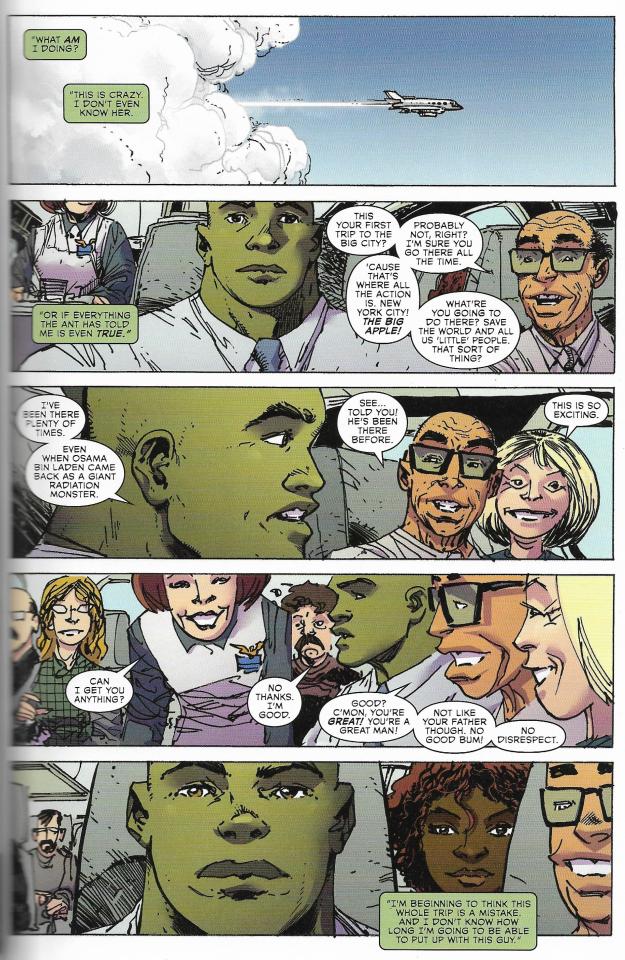
As usual, I prefer the ‘unfinished’ version (top) to the official release product (bottom).
*
Superman Giant #9, Erika Rothberg, ed.
&
Batman Giant #9, Robin Wildman, ed.
These are two of those 100-page DC superhero packages they sell for five bucks exclusively at Walmart (for now; later this year they’re gonna have them in comic book stores too), which marry one new 12-page story per issue with three full-length reprint comic books from elsewhere in the 21st century. I just wanted to know what was inside them. Here is what I found:
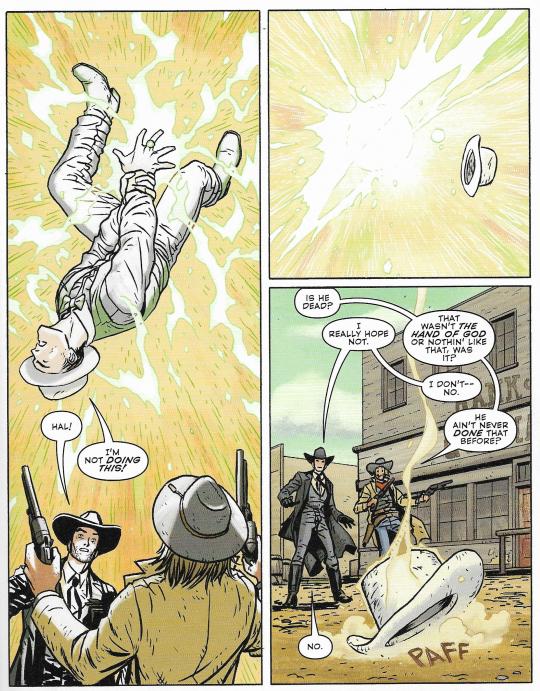
-The new Batman comic is written by Brian Michael Bendis as a very conspicuously all-ages prospect, where the story is about nothing more than what it’s about, and the title character is presented as a serious-minded but inquisitive and compassionate man of adventure. This issue -- just in time for the remix of “Old Town Road” featuring Billy Ray Cyrus -- Batman and Green Lantern travel back to the Old West, trade in their superhero outfits for cowboy clothes, and meet up with Jonah Hex. Nick Derington draws the heroes smooth and squinting with Swanian sincerity, and Dave Stewart colors it all bright and sunny. This is not my thing at all, but it’s confident to the point of acting like almost a rebuke to the rest of the book, where literally everything else is chapter whatever of a nighttime doom ballad drawn by either Jim Lee or something trying very hard to look like him.
-Like:
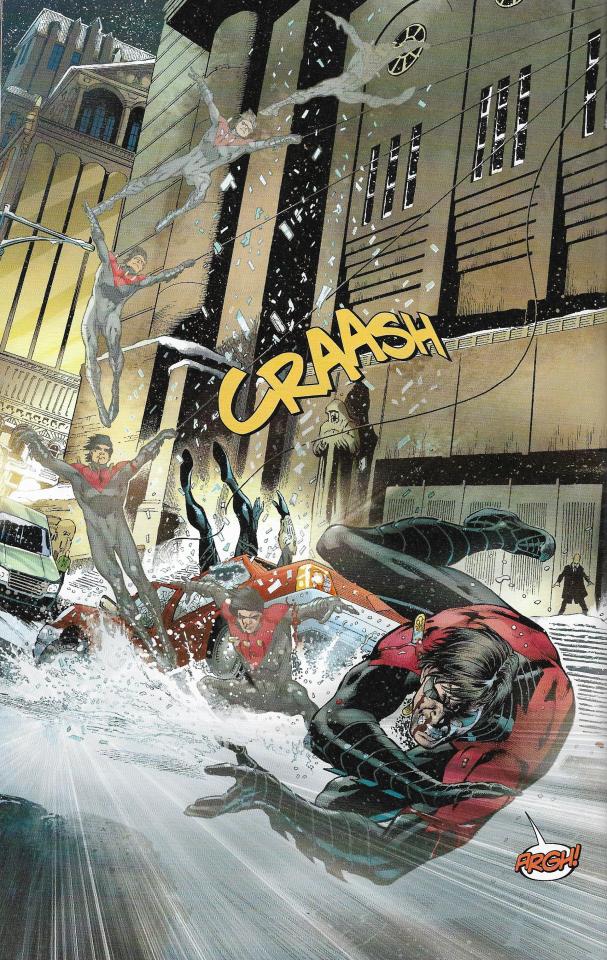

I can spot the differences, sure - if nothing else, reading superhero comics trains you to spot differences in otherwise similar things. But, there is absolutely an aesthetic at work. The top page is from an issue of “Nightwing” that tied into the 2012 “Night of the Owls” crossover in the Batman titles, produced by a seven-person drawing and coloring team fronted by pencillers Eddy Barrows & Andres Guinaldo. The writer, Kyle Higgins, has Dick Grayson fight his semi-immortal great-grandfather, who is an assassin for the Court of Owls: one of the more popular recent Batman organizations of villainy, presented here as a fascist group mediating society’s function through murder from the gray space between social classes. The Graysons, therefore, are the Gray Sons, but Nightwing resists the pull of destiny by winning a big fight, slinging the villain over his shoulder, and walking away toward a better future of just beating the shit out of bad people instead of killing them, I think. The Batgirl story -- from 2011, written by Gail Simone -- is comparatively orthodox, finding the character gripped with uncertainty about the superhero life and going about some downtime character-building activities, though most of it’s a big fight with a villain with a tragic past. The penciller, Ardian Syaf, kind of has trouble blocking the action so that characters’ movements are clear; I think Syaf is best known for having his contract with Marvel terminated in 2017 for slipping what were widely interpreted as anti-Christian and antisemitic references to Indonesian politics into an X-Men comic.
-There is a whole lot of Jeph Loeb among the reprints. He is not a writer who has been in critical fashion for much the past two decades, but he has undoubtedly sold a lot of comics for DC, and they probably feel he can do it again. The Batman book is serializing (deep breath) “Hush”, a 2002-03 storyline notable for its extraordinarily easy-to-solve central mystery, and generally being a taped-together excuse for Jim Lee to draw as many popular Batman characters as possible across 12 issues; it sold like hot cakes. The highlight of chapter 9 is probably a bit where a three person fight ends in one panel, and then one of the characters leaves, and then a second character wakes up from unconsciousness and also leaves, and then the first character comes back and nurses the third (also unconscious) character back to health, and then Batman arrives, all in the transition between the aforementioned panel and the next, which takes place in the same room; such is the befuddling desire to race ahead to more spectacle. Jim Lee (with Scott Williams and Alex Sinclair) is indeed Jim Lee (et al.) throughout, though at one point the team drops a howler of a swordfighting panel where Batman’s blade appears to grows to JRPG length due to what I think is the colorist filling two whoosh lines with the same hue as the swords.

Meanwhile, the Superman book is serializing a 2004 storyline from “Superman/Batman” -- the series where Loeb has Superman describe the action on the page with his own Superman-branded captions, and Batman does the same with Bat-captions, and Superman says tomayto and Batman says tomahto -- in which the late Michael Turner, one of the rock star 2nd generation Image artists, illustrates a new introduction for Supergirl. But this isn’t quite the same comic that was originally published... can YOU spot the difference?
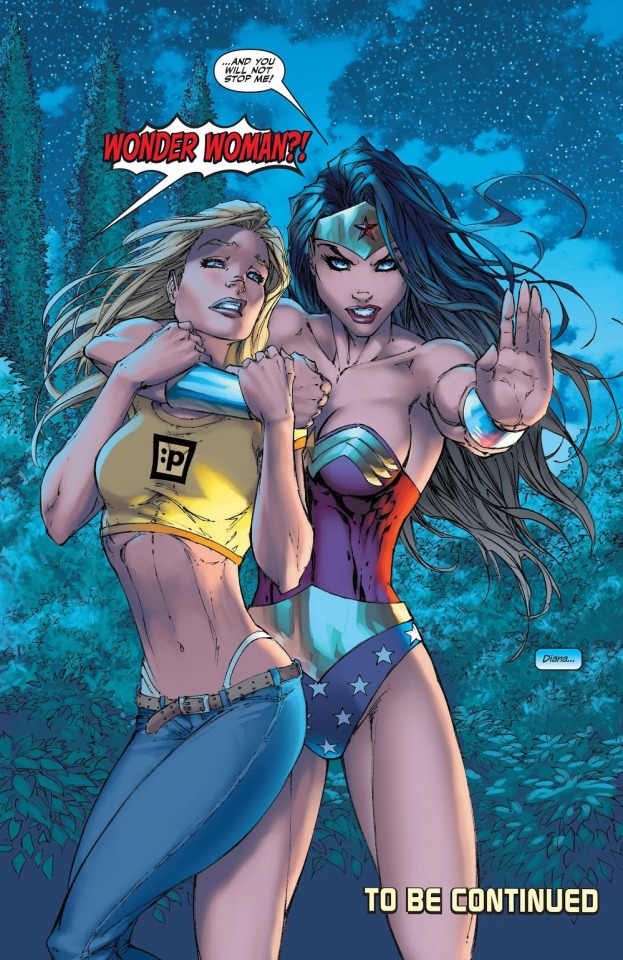
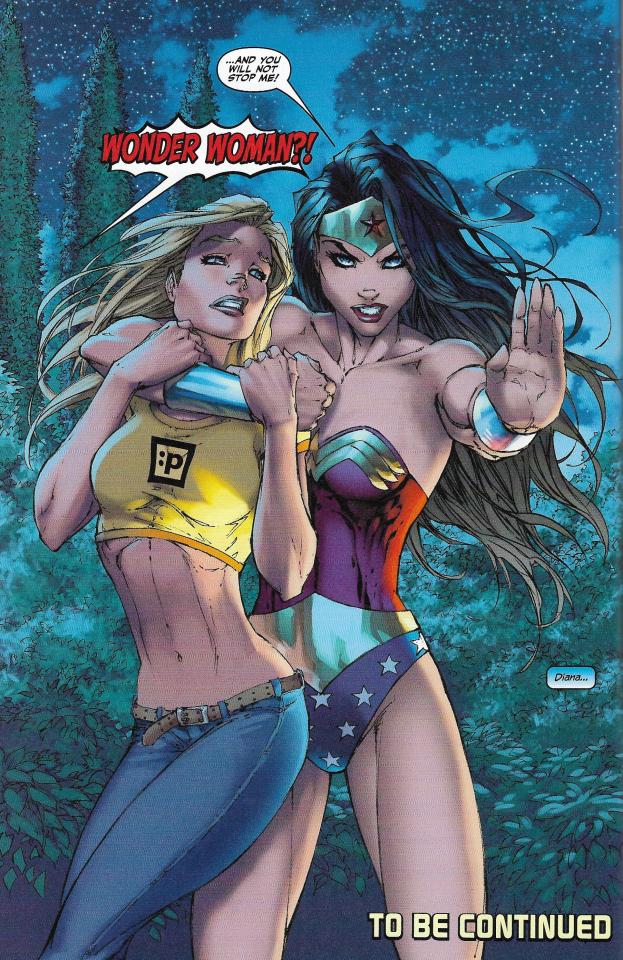
Is this like how Walmart won’t sell CDs that have an explicit content sticker, but with teen superhero g-strings? It’s hard to explain to younger readers how the low-rise/thong panties combo forever sealed the horniness of a generation of het male superhero artists into the late 1990s, and maybe DC doesn’t want to face that. Or, they’re just leery of how Turner slipping some peekaboo glimpse of Supergirl’s underpants or bare thighs into virtually every panel in which she is depicted below the waist might affect the marketability of the comic in 2019 - although I guess it could have happened in an earlier reprint somewhere too.
-The new Superman comic is a series of 12 splash pages depicting a race between Superman and the Flash. There is very little sense of speed, because Andy Kubert (inked by Sandra Hope, colored by Brad Anderson) draws the characters as frozen in time in a way that prioritizes muscular tension in the manner of contemporary superhero cover art; at one point the two characters part the sea with the force of their bodies, and it looks to me like they’re gesticulating in front of a theatrical backdrop. And, anyway, the story pulls back almost every other page to depict Batman standing on a ledge, or Lex Luthor in a sinister chair -- or some birds flying next to a building, or the Earth as viewed from space with streaks on it -- as the race occurs deep in the background or off to one side. The point is not excitement, but reflection, as imposed upon us by the between 13 and 21 narrative captions and/or dialogue balloons pasted atop all but the first page.
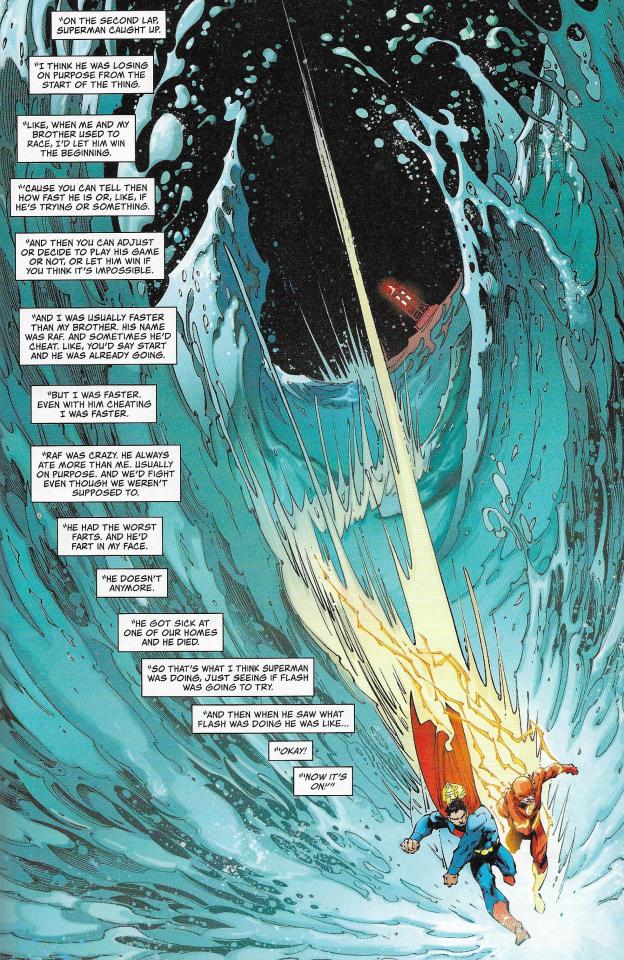
The writer is Tom King, whose “Mister Miracle” (with artist Mitch Gerads) gets a double-page advertisement later in the book, festooned with breathless blurbs from major media outlets. His narrator here is a little girl who is literally chained in captivity, clutching a Superman doll, and delivering her soliloquy in a manner of a superhero-themed TED talk with handclap repetitions on the nature of contradiction. Being faster than a speeding bullet is a CONTRADICTION. Being as strong as a locomotive is a CONTRADICTION. Leaping tall buildings in a single bound is a CONTRADICTION. Superman is about to lose the race, but then he wins, because to beat the Fastest Man Alive is... a contradiction. No wonder the GQ entertainment desk was blown away. DC comics do this kind of thing a lot, where they just have the writer tell you how great the characters are, and since you’re still reading superhero comics in the 21st century, you’re expected to pump your fists in recognition, because you and the writer and everyone at DC are just big ol’ fans... but I am not, because I am Jesus Christ, the only son of God.
-Elsewhere in the Superman book is an issue of “Green Lantern” from 2006, drawn by Ethan Van Sciver (inked with Prentis Rollins, colored by Moose Baumann), who is known today mostly as a conservative ‘personality’ online. He also netted more than half a million dollars last July in a crowdfunding campaign to make a 48-page comic book which he has not yet finished; funny to see an American right-winger on the French schedule. Funnier still to see the kind of people (mostly guys of a certain age) who mill around such personalities croaking about how diversity is ruining comics, because ALMOST EVERY FUCKING STORY IN BOTH OF THESE 100-PAGE BOOKS IS DRAWN BY EITHER SOME DUDE FROM THE 1990s OR SOMEBODY WORKING EXPLICITLY IN THAT STYLE, but - I guess when you’ve been pampered for so long, every paper cut feels like a ripped limb. Speaking of dismemberment, the writer here is Geoff Johns, who is often pegged as a superhero traditionalist, though he also has a grasp of gory pomp which occasionally pushes the comics he writes into a Venn diagram set with loud youth manga... at least in terms of how the action plays out, all broad and pained. So, needless to say, he’s currently writing “Doomsday Clock”, which is DC’s present attempt to extend the publication life of the valuable “Watchmen” property, so that they needn’t return it to the original creators, per the original writer, Alan Moore.
-To hear Alan Moore say it, the America’s Best Comics line was done on a work-for-hire basis as a means of ensuring prompt payment of the various creators from Jim Lee’s WildStorm, the original publisher. WildStorm was then acquired by DC (Jim Lee is now their co-publisher and chief creative officer), and Moore -- who has been (fairly) criticized in the past for taking ethical stances that cause financial harm to his artistic collaborators, who are in a less economically flexible position than writers in the comic book field -- allowed the line to continue under DC’s ownership, as to cancel everything would disadvantage everyone working on the titles. One of those titles, “Tom Strong”, was written by Moore and pencilled by Chris Sprouse for a while, and then there was a long line of guest creators, and then Moore and Sprouse came back when the ABC line wrapped, so that the concept could reach its logical termination point in an apocalyptic manner... Moore does love an apocalypse. The final story in the Superman book is a very recent, late 2018 issue of “The Terrifics”, in which we find an attempt to revive the DC-owned Tom Strong characters as players in broader DC stories. Jeff Lemire & José Luís are the primary creators. Jack Cole’s Plastic Man is there, as well as the John Ostrander/Tom Mandrake version of Mister Terrific. It’s a lot of offbeat characters; we even see Moore’s own parody of Hoppy the Marvel Bunny, because, I mean, Alan Moore does a lot of riffs on preexisting characters too, right? It’s a big blob of cartoon whimsy, filled with available characters running around. If they’re available, you might as well roll ‘em out, off the new releases rack and into a supermarket reprint package stacked in a box next to squeeze toys and discount Pokémon merchandise, which I bought, because it was really cheap.
-Jog
17 notes
·
View notes
Photo
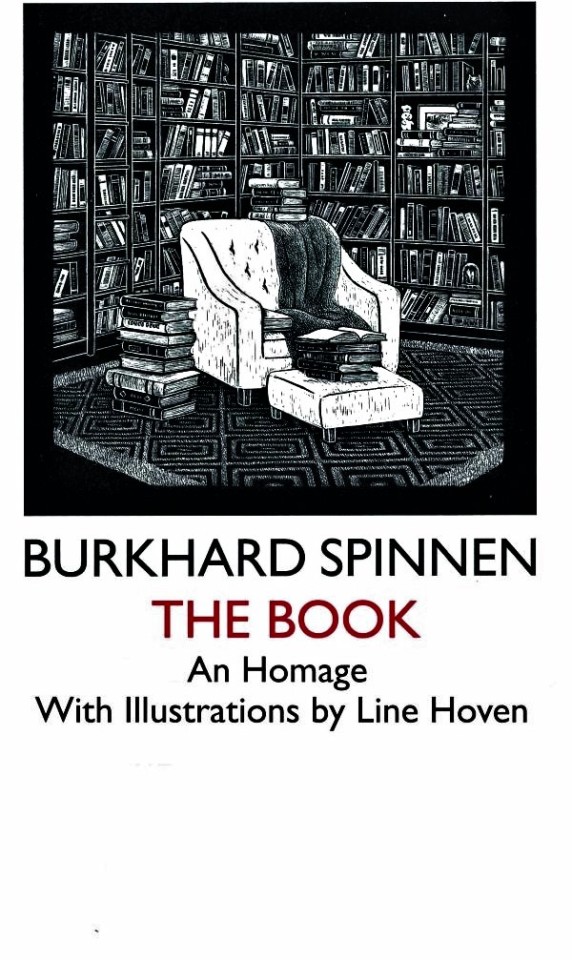
German author Burkhard Spinnen revisits moments of bibliophilia mixed with anguish through a personal and historical journey of the books we encounter and the places we meet them. With anecdotes of serendipitously finding vintage copies of literary classics and bemoaning the loaned book you'll never get back, Spinnen reminds us that even if the eBook has made reading during a commute easier, it will never bring us as much pride as a well-stocked shelf. Or recover the smell of ink on paper, or the pleasure of good margins and letter-spaced capitals. For those wanting to keep their hard copies close and chat with friends about the joy books have brought into their lives, The Book offers up a kindred spirit. There's a hole in the heart of humanity that only books like The Book can fill. This condensed history of the printed word along with the dashing and mildly provocative line-cut illustrations of Line Hoven will embolden you to speak out and insure its future.
Daily inspiration. Discover more photos at http://justforbooks.tumblr.com
4 notes
·
View notes
Text
An Analysis on A Series of Unfortunate Events: The Bad Beginning.
Once upon a time, I wrote a small letter to Lemony Snicket at the height of the popularity of A Series of Unfortunate Events books, fueled by my own anticipation of the book coming on October of 2006, appropriately on Friday the Thirteenth. Just a few days afterwards, I received a response from him via a post card. Even now; it was one of my most precious memories when I received the post card. It was one of those mass printed post cards that the publishing house would send. It was a very fascinating dead eye moment in my childhood.
What was even better was that the poem itself was an Acrostic, a word which here means a constrained writing form in poetry where the first letter, syllable, or word of each line is used to spell a word, message, or even the alphabet. I was ecstatic when I read through and only I could see “Olaf is near,” and could only mentally prepare myself for the imaginary battle of good versus evil against the filthy and greedy Count Olaf.
But, that’s not what I remember most of all. As I look at it now, I still remember the post script in the upper left-hand corner which writes, “P.S. You’re a great writer, Johan!” Now, a part of me suspects that it was written by a writer’s assistant, but the child in me desired it to be his own hand, written in ink and in casual capital letters. Until I meet him, I wouldn’t know. And I don’t know if I want to meet him.
Now and again, I pull down my copy of the Beatrice Letters and pull out the post card to look at it and remember the moment of my dreams being set into an orchestral piece with a full chorus of opera singers rising in my head. Truly, that was one of the pivotal moments that set me down the path of becoming a writer, studying creative writing in college and writing my own pieces from time to time.
Lemony Snicket, the moniker of Daniel Handler, was one of my heroes as a child. Which is why I am making I’m writing this piece as a retrospective of the Series of Unfortunate Events. With the new release of the Netflix series making what I feel to be the most genuine interpretation of Handler’s world of Victorian gothic mixed with some darkly comedic moments within its pages of absurdism, it is a true departure from what the Nickelodeon movie had done with its rushed collaboration of the first three books slammed into each other like some Cronenbergian monster with the semi-retired actor Jim Carrey at its helm. I want to revisit the books and see how they stand as their own entities. I will take the books a few paragraphs at a time, not summarizing their own plots but acknowledging what Handler does to keep his audience tearing through the pages to the end, as I did long ago.
The Bad Beginning is the entry point into the series, and from the start it sets the tone of the whole thirteen book franchise. We are brought into the world of the Baudelaire orphans: Violet, Klaus, and Sunny. Each one of the children are experts in their fields; Violet is a mechanical and engineering prodigy, Klaus is an avid reader who remembers everything that he reads, and Sunny has very sharp teeth that could bite into anything. These three tropes Handler uses are practical in their descriptions and gives an excellent canvas for growth in later novels. One important trope to mention in the books’ execution is the way Handler, portraying as Snicket, brings the tone of the books in a melancholy perspective of journalism and storytelling. He even states on the back of the book, “It is my sad duty to write down these unpleasant tales, but there is nothing stopping you from putting this book down at once and reading something happy, if you prefer that sort of thing.”
What you will expect out of these stories is a recurring theme of obliviousness in the adults, no matter how well intentioned or poorly mannered they are. Mr. Poe, the Beaudelaire’s handler of their parent’s fortune and for Orphan Affairs at Multuary Money Management, is the embodiment of this philosophy. Handler plays around with the adults and gives them proper motivations and characteristics that make all of them memorable. In the first book of the series, we are introduced to the three major adults, as well as accomplices, of the book; Mr. Poe, Justice Strauss, and the bane of the Baudelaire’s and main antagonist, Count Olaf.
I will say one thing about Count Olaf at his most basic form, without the disguises or the manipulation of adults in the time the Baudelaire’s lived with him; he is the embodiment of a perfect children’s villain. From the cover art and inserts by Brett Helquist to illustrate the dark aesthetic that the books sustain in its varying locales, the only steady attribute of Count Olaf’s treacherous and vile character. At his core, he is vile, greedy, demanding, and even bad smelling. There would be no Series of Unfortunate Events without the recurring schemes and creative use of horrific deception that he concocts, along with his accomplices. When we’re introduced to him in the Bad Beginning, the reader already despises and feels uncomfortable as Handler describes the state of his house, the tower, and the disgusting accommodations he provides instead of a healthy and safe home for three children- I am calling the Orphans ‘children’ because that’s what the adults call them- and makes them do tedious and horrifically boring chores while he openly talks about taking their fortune and using it for himself.
I have already said my piece on Mr. Poe- a character who I still despise as much as I enjoy a bowl of buttered popcorn; very much and with ferocity- but in the case of Justice Strauss, I find her to be the guardian who could have been. She’s a pleasant character and for the life of me I would ask why she would be next door neighbors to a vile villain such as Count Olaf, but at the same time, I believe it to be an excellent juxtaposition that Handler uses. Strauss and Olaf work just as well as representations of the whole series; there are good moments to oppose the reality of what the story is at its core. Take for example, the part when Olaf orders the Beaudelaires to cook dinner for him and his troupe. Instead of keeping a whole chapter of them wallowing in pity, Justice Strauss comes and helps them pick an easy dish for dinner; pasta puttenesca. The descriptions of the trip to the market and the shared explanation and sympathy from Justice Strauss makes the reader feel more comfortable and gives them a break from the main story, only to have them thrusted back into the terrible story- the word terrible is being used to describe the horror on one’s face when they continue to read the events in Count Olaf’s home and not to describe the way the book is written.
There is only one point where the good and bad mix- Count Olaf and Justice Strauss- and that is when Olaf recruits her as an unaware accomplice in his scheme to marry Violet for the Beaudelaire fortune. This is another common theme that the series delves into; good and intelligent people can do bad things if the phrasing is done right by bad and intelligent people, even if the good did have good intentions. In this case, Justice Strauss wanted to be on stage ever since she was a little girl, and Olaf took advantage of that to make the illusion of “Al Funcoot’s, The Marvelous Marriage,” into a legally binding marriage through Olaf’s interpretation of in loco parentis. But, only through the only plot hole in this book did this not come to fruition- writing with someone’s not dominant hand equals it’s not legal? What?
Regardless, the first book of the series upon release in 1999, was a perfectly created story for children who were tired of reading stories that were cheerful and had a happy ending. In my personal words, it was about time to read a story that played with darker undertones, not to terrify its readers but to grip them. The inclusion of various single words with definitions, the engaging scenarios, and villains that people can identify immediately without having to go through many pages to realize that they are the bad guy makes The Bad Beginning a deeply disturbing yet equally thrilling middle childhood book for any child with a high enough reading level to understand and be enthralled by.
The Bad Beginning, a Series of Unfortunate Events: Book the First, by Lemony Snicket: 4/5
21 notes
·
View notes